Ronald.phillips
Shared posts
Vulkan-based D3D9, 10 and 11 translation layer DXVK version 2.0 out now
In The White Lotus Season 2, The Di Grasso Family Represents Three Unique Generations Of Masculine Rot
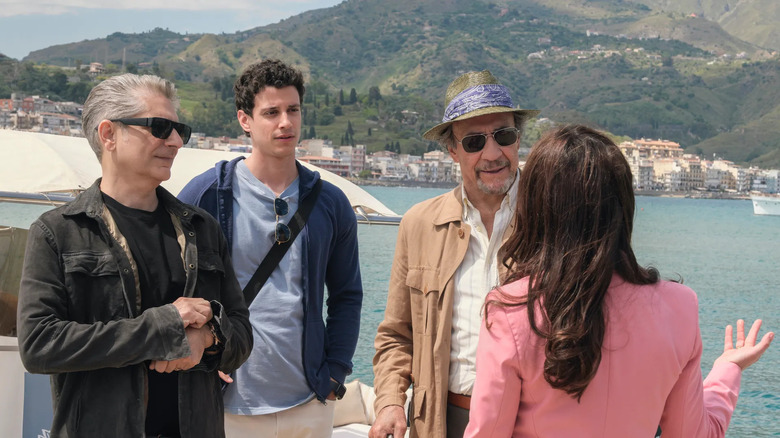
HBO's "The White Lotus" is back again, and Mike White has managed to assemble yet another cast of fantastic actors playing absolutely awful people. The show's second season finds us in a whole new location with a mostly new group of characters, with the exception of the return of Jennifer Coolidge's Tanya and Jon Gries' Greg.
Three of the new characters are the men of the Di Grasso family. We have Bert, played by F. Murray Abraham, the sexist and inappropriate grandfather of the trio. Then there's Dominic, played by Michael Imperioli, Bert's son and a Hollywood producer who's earned the ire of the women in his family. Finally, we have Albie, played by Adam DiMarco, Dominic's son and a recent college graduate.
The three men are in Sicily to reconnect with their roots and to visit the town where Bert's grandmother was born. It's a noble cause for a trip, and seemingly normal enough, but as the show goes on, the absence of Dominic's wife and daughter becomes glaring. Dominic has done something, presumably some womanizing, to earn the hatred of both his wife and his daughter. And while the old-fashioned sexist Bert tells his son that he needs to mend fences with his scorned family members, young Albie condemns his father's actions, saying he's only still on the vacation because he sees himself as the peacemaker of the family.
What Mike White is doing with the Di Grasso men is exhibiting three generations of men in a family who seem to reflect changing attitudes toward women. But as more information about the characters is revealed, it seems that less has changed than we may have believed at the show's beginning.
The Harmless Relic
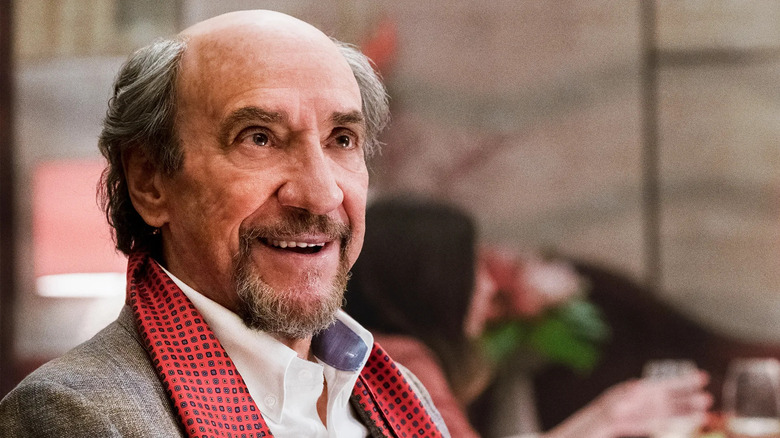
"The White Lotus" has never pulled punches when it comes to its male characters, unafraid to portray many of them as horrifically toxic and sexist. But with the Di Grasso family, that toxicity is at the forefront, with the three men serving as a chart of how these misogynist attitudes have both changed and stayed the same over the years.
Firstly, there's Bert, the patriarch of the Di Grasso clan. Bert is representative of old-timey, unchecked misogyny. From his first appearance on the screen, Bert has been acting inappropriately toward every woman he's encountered. He flirts uncomfortably with Valentina as she greets them getting off the boat to the resort, and he makes uncomfortable comments about Tanya's young assistant, Portia. He's unrepentant and refuses to stop, even when Dominic demands it, but his behavior can sometimes be waved off because of his age and demeanor. Bert's actor, F. Murray Abraham, addressed this in a GQ interview:
"He's completely out of step with the present day. One of the reasons I think he gets away with some of the outrageous things he says is that he's so innocent about it. And he's not ashamed. He's not censoring himself."
Bert faces almost no consequences for his actions because of his demeanor. Even Portia, one of the young women he acts creepily towards, calls him "adorable." Because of his age, and the fact that he was born of a different generation, he's able to get away with a level of sexism others cannot. And if you try to argue for the innocence of his actions, he dispels that argument when he admits to Dominic that he, too, cheated on his wife countless times. He's from a time when men faced no consequences for their misogyny and because of that fact, he still doesn't.
Stuck Between Two Eras
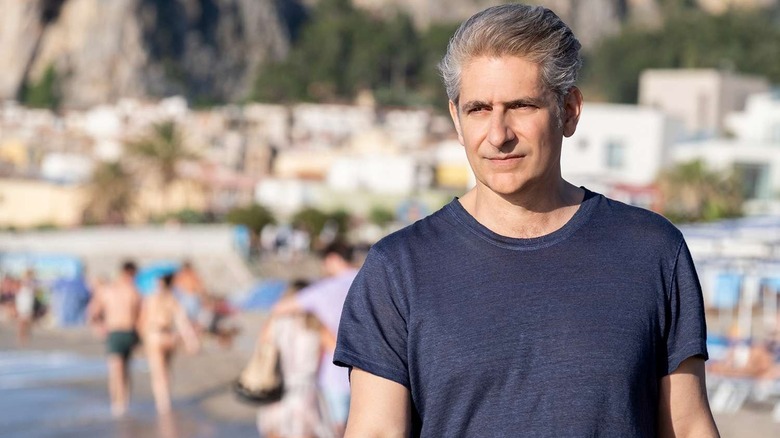
Then there's Bert's son, Dominic. Dominic is nowhere near as outwardly sexist as Bert. He constantly tells his father to stop and apologizes to others for his behavior. Dominic is young enough to know that such behavior doesn't fly anymore, but, as we come to learn, the sexist worldview of Bert's time is still evident in Dominic's actions.
Dominic is representative of the first generation to receive pushback on their sexist attitudes. Dominic engaged in the same sort of behavior Bert did his whole life, having cheated on his wife many times. But unlike Bert, who remained married for many years, Dominic's wife and daughter have seemingly cut him out of their lives. While the specifics of what Dominic did that served as a final straw have not yet been revealed, I'm expecting it to be something fairly horrific.
Dominic is established to be a Hollywood power player, which draws some obvious parallels to the #MeToo movement and figures like Harvey Weinstein. Dominic existed in a transition period between eras, from when he could philander and treat women however he pleased, to the point where that behavior was deemed unacceptable. Now Dominic is being punished for his actions. Despite his massive financial success in his profession, Dominic has to live life in a broken family -- something Bert's generation never had to worry about. Dominic's actor, Michael Imperioli, spoke on Dominic's deep unhappiness in a GQ interview:
"You have somebody who's achieved a lot of success in his career, worked hard for it, and felt that the fulfillment of that would bring him a certain amount of satisfaction or completeness. But the reality is that it's anything but that, and he's unraveling."
As the world changed, Dominic did not adapt, and now all of his success means nothing.
The Bystander
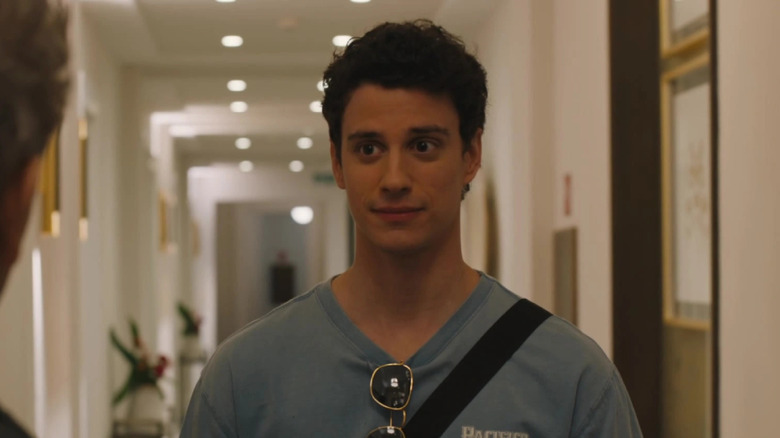
Now we land on Albie, the youngest of the Di Grasso men. On the outside, Albie seems very different from his male relatives. You hear Dominic's wife (played by Laura Dern) on the phone describe Albie glowingly, referring to him as sweet and sensitive. He doesn't visibly carry any of the sexist attitudes of Bert or Dominic, and during a dinner with Portia, he talks about how much he hopes to not have the same relationship with women his father does. Albie says he doesn't want to make anybody uncomfortable.
But as the layers of Albie have begun to unfold, we begin to question some of his motives. Why isn't he as angry at his father as his mother and sister? He claims he's just playing peacemaker, but if Dominic really did something so horrible that it made his wife and daughter not want to talk to him, should Albie really be giving him the benefit of the doubt?
Albie's also somewhat dismissive of his grandfather's sexism. While Dominic is only telling Bert to be quiet because he fears the social ramifications of his bad behavior, at least he's trying to get him to stop. But Albie never really does anything to discourage his grandfather. Once again, you can say that he knows his grandfather's an old man and mostly harmless, but does that really justify him standing idly by?
The Dangers Of The 'Nice Guy'
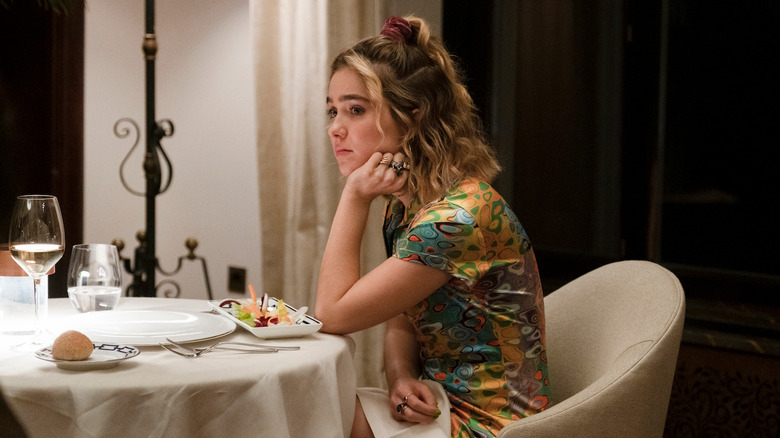
But it's during his dinner with Portia that some cracks begin to really appear in Albie's nice guy facade. Up to this point, Albie had been portrayed as a fairly suitable (if somewhat awkward) potential love interest for Portia.
As the two converse over their meals, potential red flags are raised. Portia asks Albie about the situation with Dominic, asking him directly why he's not as mad at his father as his mother and sister are. It takes Albie a few seconds to answer, and his justification is fairly weak. If he were truly very mad at his father's actions while reluctantly playing a peacekeeping role, the affirmation of his anger would have been quicker and more assertive.
Additionally, Albie makes a remark that sounded some alarm bells for anyone aware of the culture of "internet nice guys" that has become prevalent in recent years. Albie comments that, while he believes himself to be a nice guy, women don't often want to be with guys who are nice to them. This implies an attitude of entitlement and a belief that his being "nice" deserves to be rewarded with romantic attention from women.
Furthermore, the dinner with Portia highlights the difference between what the two were seeking. Portia is pretty clear that she is just looking to "have fun," while Albie talks about how the type of women he gravitates toward tend to be "pretty, wounded birds." This shows that while Portia is just having fun flirting, Albie wants to see himself not as a companion, but in a savior role, rescuing a woman from whatever he perceives her problems to be. This difference in desire is shown again when Albie requests to kiss Portia at the end of the night, a request she fulfills but without much enthusiasm.
The Structures Stand
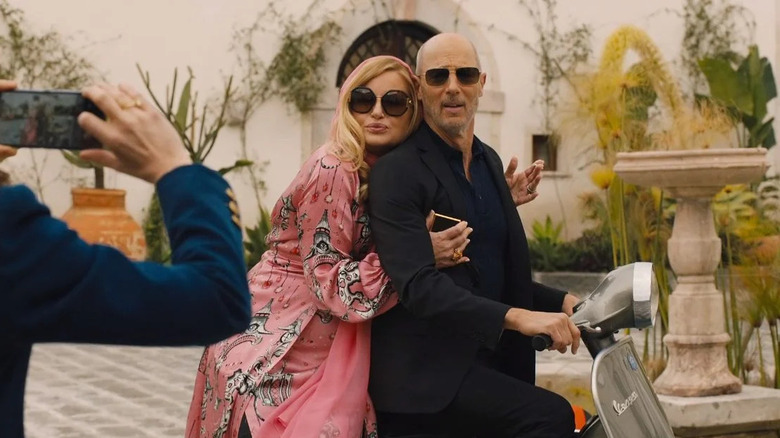
A theme that has stayed consistent on "The White Lotus," even as it's undergone its literal change of scenery, is one of complicity. Even those with the best of intentions are complicit in the societal structures that allow one group of people to subjugate another, whether it be rich vs. poor, men vs. women, or white vs. non-white.
In the Di Grasso family, we see a family grappling with the consequences of a drastic shift in one of those oppressive structures. Bert and Dominic are relics of a time when the structure was different, and they stood in even higher positions than they still do today.
However, the show is also clear that while the structure has certainly shifted in a positive direction, it has by no means been completely destroyed. Even someone like Albie, who seems to have good intentions, is still a part of that structure. These oppressive systems are clearly exhibited in the show's other characters as well, from Ethan and Harper to Greg and Tanya.
As the season continues, I'm excited to see continued commentary on these generational divides. While I think it's clear the message is that not as much has changed as we may think, it will be intriguing to see how far the show is willing to take that theory, especially in terms of Albie. If I learned anything from the first season, it's that on "The White Lotus," the structures tend to stay in place.
Read this next: The 15 Best Anthology TV Series Ranked
The post In The White Lotus Season 2, the Di Grasso Family Represents Three Unique Generations of Masculine Rot appeared first on /Film.
DXVK 2.0 released, aiming to minimize shader compilation stutters in DX11 games
The team behind DXVK, a Vulkan-based DX9, DX10 and DX11 translation layer, has released a brand new version of it. The key feature of DXVK 2.0 is its shader compilation changes which aim to minimize the shader compilation stutters in DX11 games. As the team noted, on drivers which support VK_EXT_graphics_pipeline_library, including the IndependentInterpolationDecoration feature, … Continue reading DXVK 2.0 released, aiming to minimize shader compilation stutters in DX11 games →
The post DXVK 2.0 released, aiming to minimize shader compilation stutters in DX11 games appeared first on DSOGaming.
What Interview With The Vampire Gets Right About Adapting Anne Rice's Work
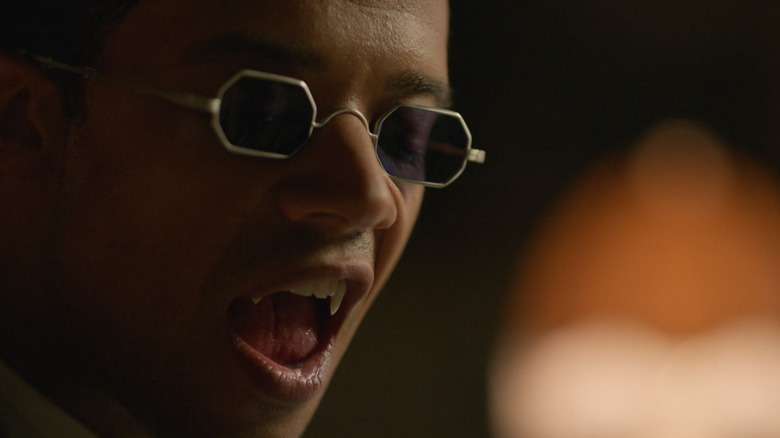
When people talk about the writing of the late author Anne Rice, they usually focus on sensuous prose and bold sexuality. Her early erotic fiction under a pseudonym is often discussed, and most people describe her "Vampire Chronicles" as sexy more than scary. What people fail to mention is that the woman was capable of describing horrific acts of violence just as artfully as she did moments of ecstasy or beauty; in fact, she may have been even better at the blood and guts. There are moments in Rice's books that have burned into my memory as surely as the goriest gag from the most brutal horror movie because her ability to paint a picture with words was among the greatest of all time.
The new AMC "Anne Rice's Interview with the Vampire" series makes a lot of big changes to its source material, but manages to keep the soul of Rice's work intact through its beautiful exploration of the novel's themes while making plenty of references for hardcore fans. Thankfully, it's also much more violent than the 1994 Neil Jordan film adaptation of "Interview with the Vampire," which featured a bit of blood but was relatively toothless for a story about vampires. The AMC series is gorgeously grotesque, with some scenes guaranteed to shock even the most hardened horror aficionado, and that's how it should be.
It's Called The Savage Garden For A Reason
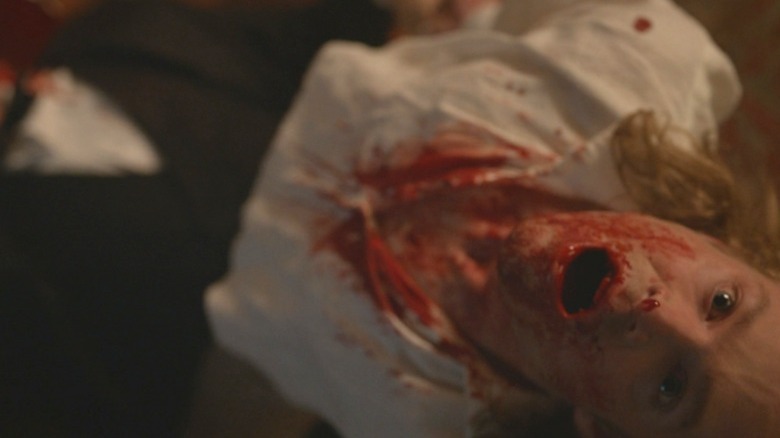
The vampire Lestat's (Sam Reid) name for the earth is "the savage garden," highlighting the idea that the world is both beautiful and bestial. It's survival of the fittest, and vampires are at the very top of the food chain. They're predators without equal, and since they feed on blood, it's basically a guarantee that their story will be very bloody. In Rice's novels, the bloodlust is written with the same kind of fervor as the human lust for sex, which leads to descriptions of nearly intoxicating violence like the following from the third novel in the series, "The Queen of the Damned":
"She ripped the head half off the neck, staring at the white bones of the broken spinal cord, then swallowing the death instantly with the violent spray of blood from the torn artery. But the heart, the beating heart, she would see it, taste it. She threw the body back over her right arm, bones cracking, while with her left hand she split the breast bone and tore open the ribs, and reached through the hot bleeding cavity to pull the heart free."
Rice's vampires were truly monstrous, and she never let her readers forget that. They could be sexy and sympathetic and very easy to love, but they were also beastly by their very nature. Vampire fiction has long danced on the lines between sex and violence, but the bloodsuckers of the secret garden are positively thirsty in every sense of the word. For them, violence is a kind of sex.
Bold, Bloody, And Beautiful
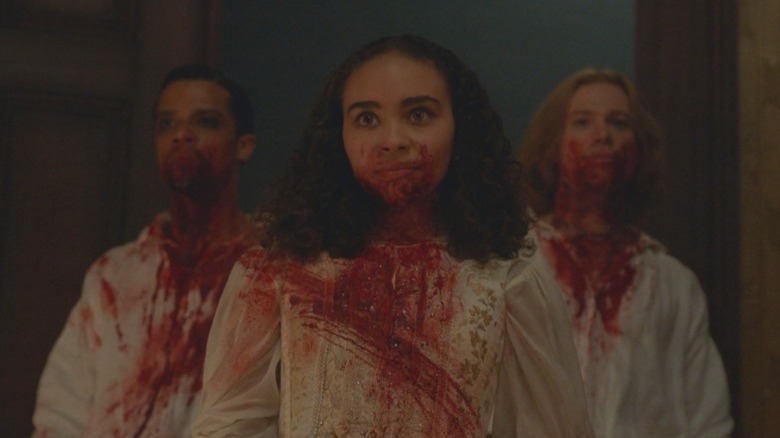
Regardless of how you feel about the series (you can read our review here), it's impossible to deny just how beautifully the bloodshed is choreographed. The vampires leap with preternatural grace, dancing a delicate ballet of death that is as mesmerizing as it is horrifying. This is the genius of vampire fiction writ large, combining the intoxicating promise of immortality with beautiful, charming monsters. There's something extra scary about a monster that's stunningly gorgeous to look at, with the ability to literally charm the pants off of anyone they choose, and both Rice and the team behind the series embrace this unique fear with an intense appreciation.
Most of the sequences of violence in "Anne Rice's Interview with the Vampire" are related to the vampires feeding in some way or another, and the brutality of their kills can rival any lion ripping apart a zebra on the Serengeti. Even the softest and sweetest of the vampires can rip off a grown man's jaw and toss it aside like yesterday's news, and the show doesn't shy away from showing every second of that destruction. The series may have made some changes to its characters and a few plot points, but its blood and gore would be guaranteed to make Rice proud. Here's hoping they can up the ante even more in season 2!
The first season of "Anne Rice's Interview with the Vampire" is available to stream on AMC+.
Read this next: The Best Movies Streaming Right Now: Malignant, A Hero, And More
The post What Interview with the Vampire Gets Right About Adapting Anne Rice's Work appeared first on /Film.
Millie Bobby Brown Struggled Through Eleven's Waffle Eating On The Set Of Stranger Things
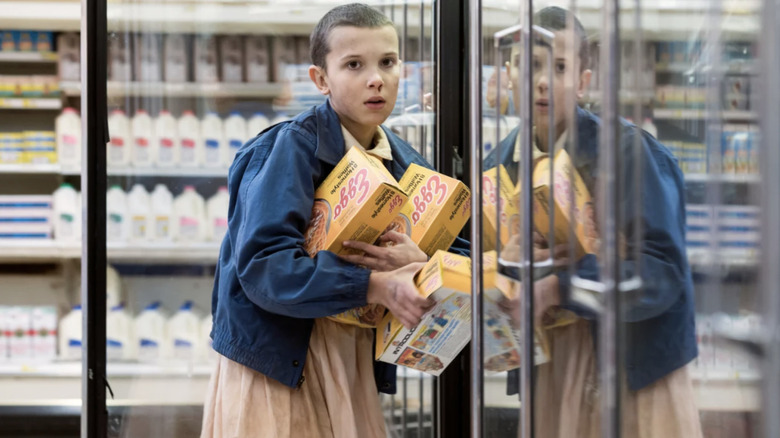
It's difficult to fully encapsulate how strong the influence of "Stranger Things" has been on pop culture. Last season's inclusion of Kate Bush's "Running Up That Hill" skyrocketed the nearly 40-year-old song to the top 10 on the Billboard charts, and in-universe pop culture references are often given a new lease on life after appearing on the popular show. The show has made reference to "Dungeons & Dragons" since the very beginning, but search results for the tabletop roleplaying game increased by 600% after the introduction of The Hellfire Club in season 4.
One of the earliest pop culture popularity bursts occurred during the show's first season when Kellogg's Eggo Waffles became the unofficial snack of "Stranger Things." When Millie Bobby Brown's character Eleven finally escapes Hawkins Laboratory, she is given an Eggo waffle for breakfast by Mike Wheeler (Finn Wolfhard). The Eggo is her first taste of the sweet, processed goodness of American-made snacks and sparks an addiction to the toaster treats. She stole boxes of Eggos from Bradley's Big Buy, Hopper leaves them out in the woods to lure her back home, and in season 2, Eleven used her powers to telepathically find Dustin while sitting in front of an open freezer of Eggos.
Eggo waffles and Eleven go together like spaghetti and meatballs, but in a cruel twist of irony, Millie Bobby Brown doesn't particularly like the frozen waffles.
No Need To L'eggo Of Eleven's Eggos

During a video segment with WIRED where the actor answered some of the most Googled questions about her, she admitted that waffles aren't her favorite. "No, I don't [like waffles] and people think I do," she said. "But actually, in 'Stranger Things,' I had a little spit bucket next to me and I'd spit into it because I couldn't swallow the waffles because I'd gag." This isn't the first time Millie Bobby Brown has expressed her personal distaste of Eggo waffles, but it's certainly the first time she's felt confident enough to be brutally honest about it. Shortly after the first season of "Stranger Things" debuted, an at-the-time 13-year-old Brown told The Wrap, "No, I like them, they're cool. They're OK I guess." She clarified by saying, "I'm not a breakfast person." Her answer is very middle-of-the-road but definitely sounds like a response from a budding actor trying not to come off as negative, especially toward an extremely popular product featured on her show.
It makes sense though, because as a kid who grew up in England, Brown wouldn't have developed a palate for America's pervasively sweet foods. As far as what Brown actually enjoys, she gave an extremely Gen-Z answer by praising avocado toast. "That's my victory breakfast!" she exclaimed. "I ate it before the MTV Awards, I ate avocado toast before the SAG awards [but] I didn't eat avocado toast before the Golden Globes." Now that she's an 18-year-old, Brown clearly appears to have found the strength to make her true opinions known, even if it shatters the illusion of her character. It's called acting, people!
Read this next: Our Biggest Predictions For Stranger Things Season 5
The post Millie Bobby Brown Struggled Through Eleven's Waffle Eating On The Set Of Stranger Things appeared first on /Film.
Emma D'Arcy 'Takes Issue' With Criticisms Of House Of Dragon's Child Birth Scenes
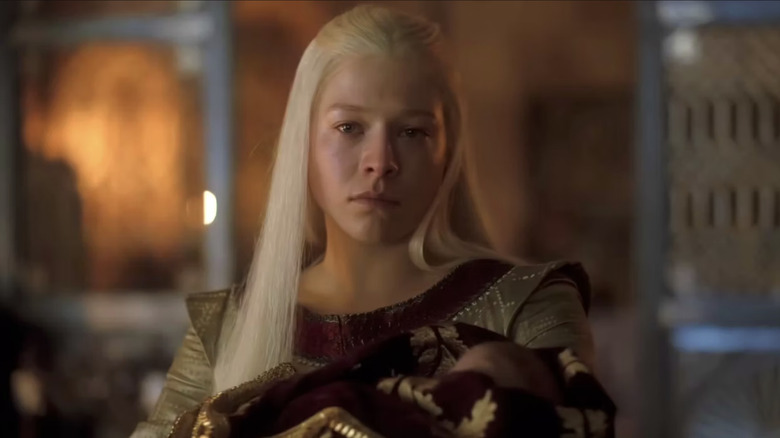
Now that the debut season of "House of the Dragon" is in the rearview, fans and creatives involved with the show have plenty of time to discuss, reassess, and debate the stories and themes presented in the popular "Game of Thrones" prequel series. The show tells the story of the Targaryen family war of succession between Aegon II and his half-sister Rhaenyra regarding their father Viserys I's throne. This war took place hundreds of years before women like Daenerys Targaryen, Cersei Lannister, Sansa Stark, and Margaery Tyrell were ever remotely considered able to sit on the Iron Throne, when men would rather kill their friends, families, and loved ones if it meant a woman wouldn't hold the crown.
Following in the footsteps of its predecessor, "House of the Dragon" does not shy away from the royal, brutal violence that occurred in previous centuries. Where the show differs, however, is its complicated examination of both misogynistic violence and the ways the birthing bed is its own battlefield. Discussing these topics, even in today's seemingly "more refined" society, is no easy task. Personal feelings and instinctive responses rooted in lived experience are bound to have an impact on how a viewer processes the stories presented on screen, which means there's no way to appease an entire audience. Many fans were vocally critical of the violence depicted in "House of the Dragon," especially the often terminal results of medieval childbirth.
"House of the Dragon" star Emma D'Arcy performed one such childbirth scene and had plenty to say in an interview with GQ regarding the criticism volleyed at these scenes. Spoiler alert: they are none too pleased.
'We Want Women To Conform'
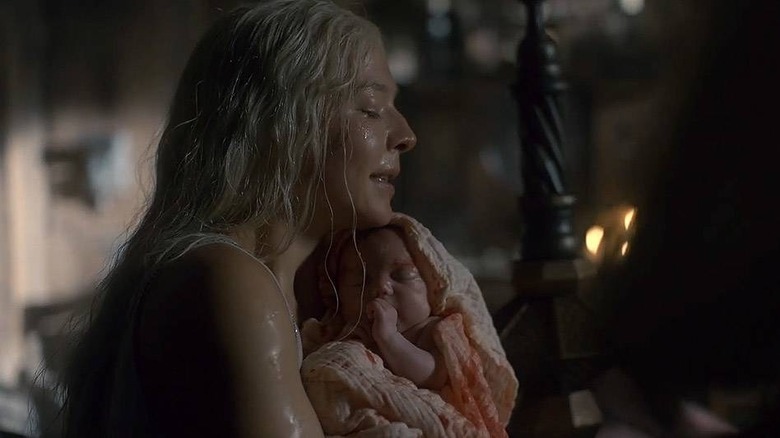
In speaking GQ, Emma D'Arcy admitted that while they've not actively sought out the criticisms of the birthing scenes in "House of the Dragon," they "take real issue with the idea that we shouldn't see women in labor depicted with gritty realism, and blood, and placentas." Childbirth is often presented as "the miracle of life" or as a "beautiful experience," which may be true when considering the life-altering emotional response that comes with bringing a child into this world.
That said, the actual physical act of childbirth can be brutal, traumatic, and physically consuming. Of course, there are plenty of people who have manageable deliveries like something out of a movie, but for many parents, their experiences are more reflective of Rhaenyra Targaryen (or tragically, her mother, Aemma Arryn) on "House of the Dragon."
D'Arcy took additional issue with the criticisms considering a major unique selling point of all things "Game of Thrones" is the inclusion of "big, gory battle sequences." "What it feels like is that we want women to conform to a certain image," D'Arcy said. "Which is interesting, insofar as acting is concerned, because, there's also a lot of fun to be had getting to do the big physical, physically demanding sequences. And it's interesting that maybe sometimes that is not afforded to female characters." D'Arcy is spot on, even if accepting their comments as reality stirs up difficult feelings to process.
Sometimes life brings immeasurable difficulties, and childbirth is one of them for many people. May D'Arcy's comments be an evergreen reminder that what is traumatic for some may be therapeutic for others, and it's up to all of us to set personal boundaries, rather than demand a TV show do it for us.
Read this next: Every Game Of Thrones Spin-Off Show In Development
The post Emma D'Arcy 'Takes Issue' With Criticisms Of House Of Dragon's Child Birth Scenes appeared first on /Film.
Dying Light 2 Update 1.7.2 improves graphics & adds Intel XeSS support, full patch notes
Techland has released a brand new update for Dying Light 2. According to the release notes, Patch 1.7.2 improves graphics, reduces VRAM requirements when using Ray Tracing, and adds support for Intel XeSS. Going into more details, Update 1.7.2 improves water rendering and water lighting. As such, water is now able to reflect reflection probes … Continue reading Dying Light 2 Update 1.7.2 improves graphics & adds Intel XeSS support, full patch notes →
The post Dying Light 2 Update 1.7.2 improves graphics & adds Intel XeSS support, full patch notes appeared first on DSOGaming.
Court Upholds Piracy Blocking Order Against Cloudflare's 1.1.1.1 DNS Resolver
Read more of this story at Slashdot.
Download These Two First-Person Shooter Games for Free on PC Right Now

The glory of taking down a whole squad of heavily armed enemy soldiers while running from grenade explosions and taking cover from snipers...is even better when it’s free. Right now, there are two FPS war games you can download and play right now, for free, on your PC: Wolfenstein: Enemy Territory and Rising Storm 2:…
Pop Culture Imports: A Look Back At The Best Foreign-Language Movies And TV Featured On This Column
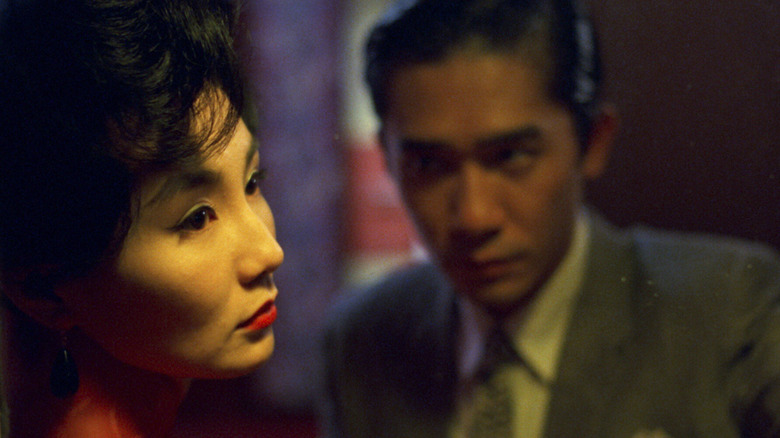
Hello, old friend. Here we are, you and me, on the last page. Yes, this will be my last Pop Culture Imports column, as I will be leaving /Film for another job. So I thought a good way to end this column would be to take a look back at my favorite titles that I've featured here.
I started this column as a way to better shine the spotlight on international movies and TV shows that I was worried would get buried amid an increasingly crowded streaming market. But it was also a way for me to express my love for the Chinese action movies that I watched from behind my parents' shoulders, the animes that were my guilty pleasures, the K-dramas that were suddenly getting crossover success. I didn't want to lose those building blocks of my love for movie and TV, so Pop Culture Imports became a diary of sorts — international movies and shows that I wanted to share with others, many of which I was seeing for the first time too.
So I narrowed down the titles that made the biggest impact on me, or that I was excited to discover and wanted others to do the same.
For one last time, let's fire up those subtitles and get streaming.
Terrace House
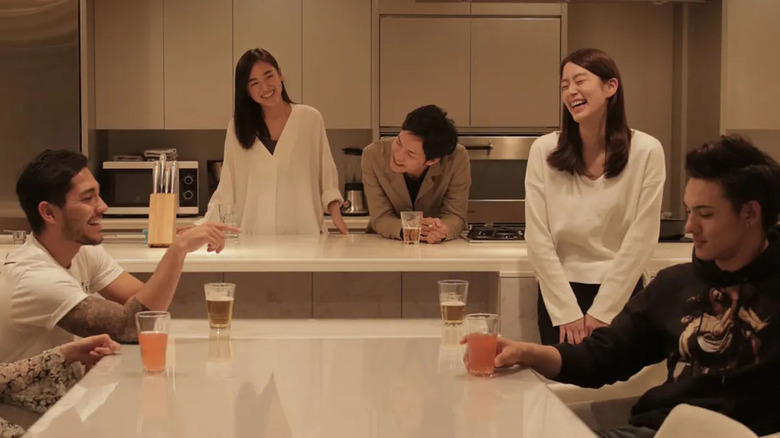
I wrote: "Terrace House" is a reality show about nothing. And that's what makes it so amazing. An unscripted show about three men and three women living in a plush minimalist house together, "Terrace House" sounds like it takes cues from trashier American counterparts like "The Real World." But it has more in common with a nature documentary than it does with its bombastic American cousins.
That's because "Terrace House" has a warm heart beneath its voyeurism. Gone are the talking heads and flashy sound effects of American reality TV. The camera simply rolls as life goes on in the house, where housemates have stilted social interactions, awkward flirtations, and occasional passive-aggressive clashes. Sometimes, they even hold hands! And all the action (or non-action) is observed by a panel of actors, comedians, and MCs, who overanalyze every dialogue exchange and mine them for meaning. While at first the presence of an "after show"-style panel during the episode can be jarring, it becomes essential when all the drama happens beneath the surface.
Final thoughts: So nice, I wrote about it twice (or maybe three times). "Terrace House" is part of the reason I started Pop Culture Imports because I could not stop talking about this strangely mundane reality show. Despite all the controversies and tragedies that have hit the show since, it still holds a special place in my heart.
In The Mood For Love
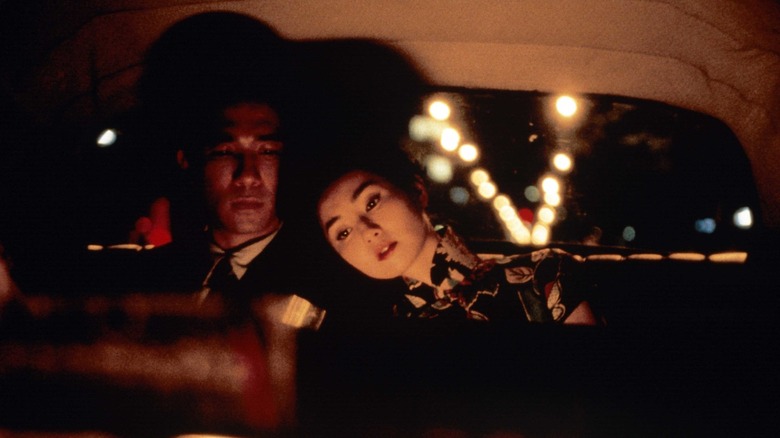
I wrote: Wong Kar-wai's gorgeous 2000 romantic drama is a sensuous — and sensual — display of restraint, and a visual flex from a master of his craft. The use of color so striking. The smallest gestures so tender. Set in 1962 Hong Kong, "In the Mood for Love" follows the relationship of a married woman and a married man who move in next door to each other and slowly realize that their spouses are having affairs with each other. Rather than confront their significant others, they try to come to terms with the infidelity by re-enacting how they think the affair began, the film slowly drifting in and out of their play-acted imagination and their actual growing bond.
Watching "In the Mood for Love" is like having a handsome man croon to you in the world's tiniest café. Mrs. Li-zhen (Maggie Cheung) and Mr. Chow (Tony Leung) are two inhumanly beautiful people whose sexual chemistry is palpable, and yet would never be allowed, or could never allow themselves, to act on their urges. Thus, the entire melancholic film is a a series of yearning glances and missed connections, all enveloped in Wong's warm, sumptuous visuals.
Final thoughts: "In the Mood for Love" was the first Wong Kar-wai film I saw, and it was a life-changing one. A dreamy two-hour exercise in yearning, "In the Mood for Love" opened my eyes to a different kind of filmmaking to fall in love with, one where character and emotion superseded plot. Many have tried, but no one has done it quite like Wong Kar-wai.
The Castle Of Cagliostro
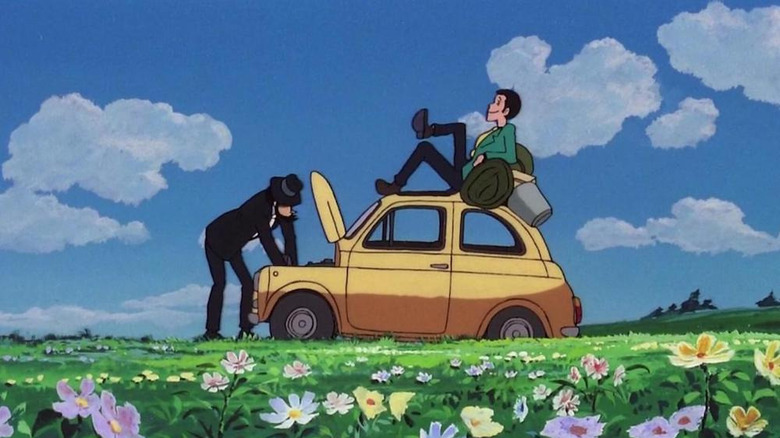
I wrote: "The Castle of Cagliostro" is chock full of vibrant characters and heart-pounding action, set against a dreamy fantastical backdrop that expertly blends European architecture with Japanese culture. There's actually a term for it that was coined after Miyazaki created the richly realized world within "The Castle of Cagliostro:" "akogare no Paris," literally "The Paris of our dreams" in Japanese, which describes a fantastical view of Europe "through Eastern eyes." It's a visual style that Miyazaki would constantly return to throughout his films, and just one of his trademark flairs that you can see him experimenting with in his very first film.
Final thoughts: Knowing Miyazaki's filmography backwards and forwards is nothing when you haven't seen his first feature film. So seeing "The Castle of Cagliostro" when it finally hit streaming was a momentous occasion for me — allowing to see where my favorite filmmaker came from, and exactly what he brought with him from his very first film.
Honeyland

I wrote: "Honeyland" has the rare honor of being nominated for both best documentary and best international feature — a first for any film. But this meditative Macedonian documentary that follows the life of Hatidze Muratova, a lone beekeeper who lives peacefully with her bedridden mother in a remote mountainous village until a rowdy nomadic family moves in next door, fully deserves that double nomination. Directed by Tamara Kotevska and Ljubomir Stefanov, who shot the film over the course of three years and compiled more than 400 hours worth of footage, "Honeyland" hardly feels like a documentary but rather like a piece of cinema verité, as if Kotevska and Stefanov had stumbled upon this beautiful, untouched corner of the world. Originally intended as a government-supported documentary, "Honeyland" pays its due attention to the effects of climate change and how the fast pace of civilization can damage the world's depleting resources, but ends up being a sad and lovely little fable of a lonely woman whose greatest struggle is with the ravages of time.
Final thoughts: "Honeyland" is the type of film I started this column for — the kind that would have gone completely unnoticed if it weren't for awards attention (it was the first documentary to score an Oscar nomination for Best International Feature). I basically stumbled upon "Honeyland" myself and was completely blown away by this real-life story that played out like part fable, part cautionary tale. If I could have put this film on any readers' radar, I will have fulfilled my goal.
Les Diaboliques
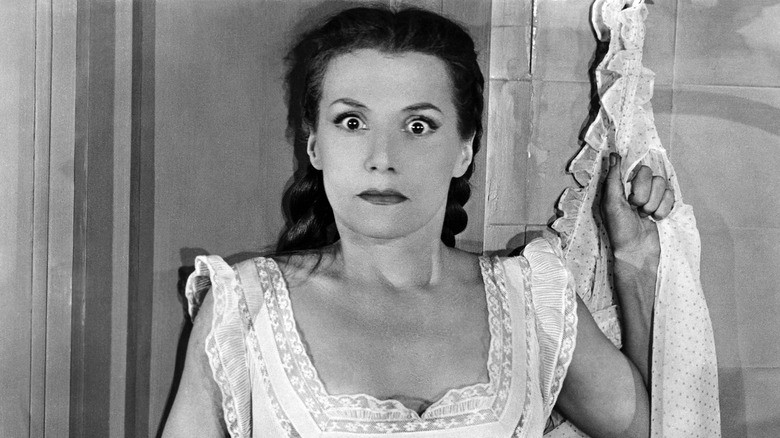
I wrote: "Les Diaboliques" is the best suspense movie that Hitchcock never directed. And that similarity is not coincidental — the British filmmaker had apparently been interested in adapting "She Who Was No More," the psychological suspense novel by Boileau-Narcejac that was the basis for "Les Diaboliques", before Henri-Georges Clouzot beat him to optioning the screenplay rights. But it would come full circle: "Les Diaboliques" and its tense, terrifying twist would end up inspiring Hitchcock's "Psycho," with "Psycho" author Robert Bloch even citing Clouzot's film as his all-time favorite horror film. And oh, what a bone-chilling, knock-the-breath-right-out-of-your-body twist it is. It comes at the end of a film that builds and builds on a feeling of dread, looming over the murder plot between a frail woman (Véra Clouzot) and her husband's steely mistress (Simone Signoret) who conspire to murder her abusive husband (Paul Meurisse). It's a perfectly creepy psychological horror film that sprinkles in just the right amount of double takes and things that go bump in the night.
Final thoughts: After you've watched enough movies, it's rare to be surprised by them. But this 1955 film managed to take me completely by surprise, and appeal to the Hitchcock lover in me at the same time. Fitting, since it was the movie that Hitchcock wasn't able to make.
Neon Genesis Evangelion
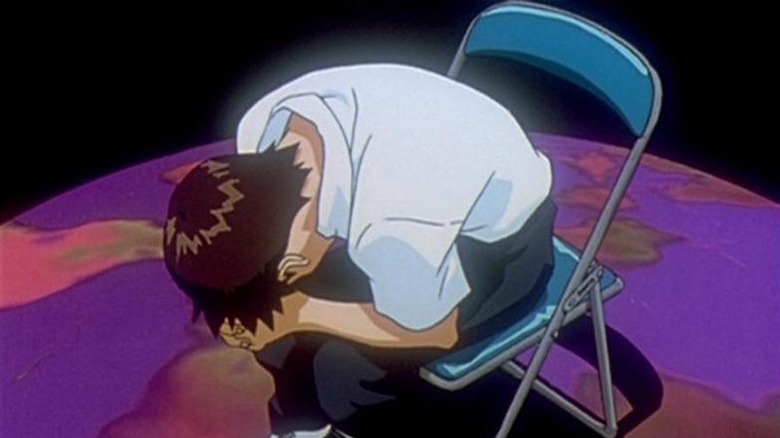
I wrote: One of the densest, most divisive anime series ever made, it would be nearly impossible to summarize "Neon Genesis Evangelion" in a short paragraph. So I'll go with your most basic plot synopsis: Set 15 years after the world has been rocked by a cataclysmic event, a teenage boy named Shinji (Megumi Ogata) is recruited by his father to pilot a giant bio-machine mecha called an "Evangelion" to ward off invading alien beings called "Angels." What seems at first to be a typical mecha anime evolves into one of the most emotionally grueling, abstract deconstructions of the genre and explorations of the concept of the self and soul. Laden with Judeo-Christian imagery and shot in stunning cinematic fashion, "Neon Genesis Evangelion" is probably the closest we get to watching creator Hideaki Anno having a nervous breakdown in real-time. And yet, despite the endless barrage of hopeless imagery and healthy doses of navel-gazing, "Neon Genesis Evangelion" is an ultimately hopeful and cathartic series about self-acceptance. At least, that's how I'm choosing to read it.
Final thoughts: "Neon Genesis Evangelion" is one of those seminal anime series that I had never watched — and now that I have, will probably never watch again. But its impact is unmistakable, its dense narrative impeccable, and its original series ending is one I will defend. It's not just about running out of a budget, it's about a man's embrace of his own self-worth and his own life. Any other additions or new endings are just gravy.
Volver
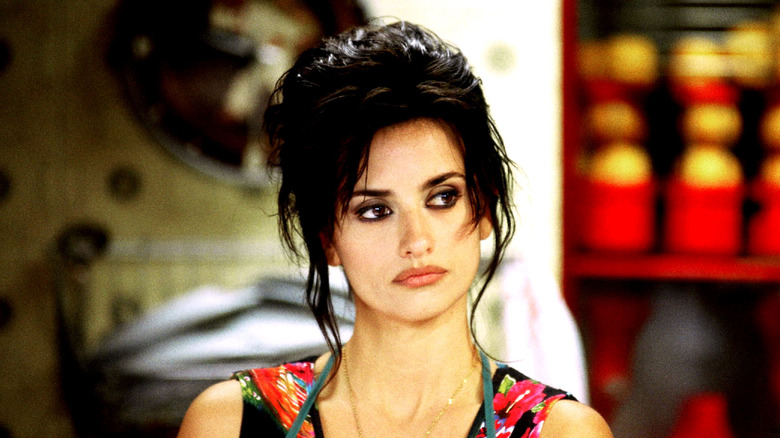
I wrote: "Volver" stars Penélope Cruz in a career-best role as Raimunda, a mother who works and lives and Madrid with her husband Paco and daughter Paula, and along with her flighty sister Sole (Lola Dueñas), worries over the health of her aging aunt, who is convinced that their recently-deceased mother Irene (Carmen Maura) is still alive, despite having died several years ago in a house fire with their father. But something strange may be afoot in Madrid, which is experiencing a mystical seasonal wind that Raimunda is convinced is driving people mad. Soon a murder and a family tragedy rocks Raimunda, Paula, and Sole's life, and their mother Irene unexpectedly returns to from the dead to help her daughters heal from past wounds. It's incredible how buoyant "Volver" is for a film that deals with grief and murder, blending farce, tragedy, melodrama, and a splash of magical realism in a multigenerational drama about the connections that bind us and the ghosts that haunt us. It's abundantly clear with every vibrant, richly colored frame of "Volver" just how much Pedro Almodóvar loves women. He worships them and paints them with a flattering, loving, brightly colored brush in his most deeply humanistic masterwork.
Final thoughts: The only male director allowed to make movies about women is Pedro Almodóvar.
Cronos
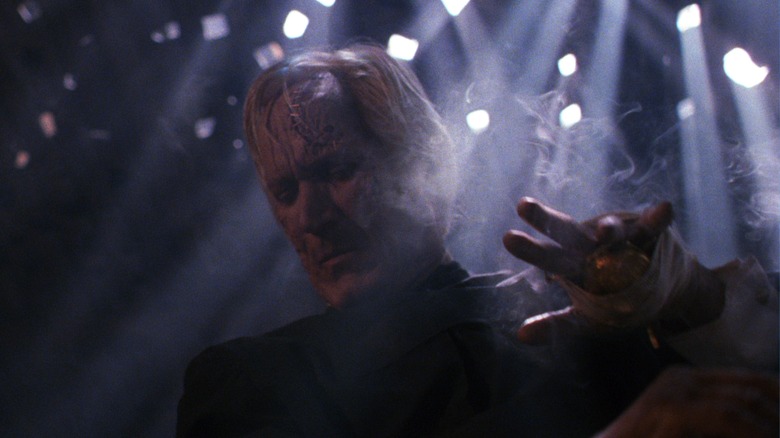
I wrote: Guillermo del Toro came out of the gate swinging with his debut feature, a gory Hitchcockian wrong-man thriller meets Cronenberg body horror. "Cronos" follows an unusual protagonist played by Federico Luppi who stars as Jesús Gris, an elderly antique store owner who happens upon a strange object in his store hidden inside a cockroach-infested archangel statue. While investigating the strange golden scarab, the device pierces his hand and Jesús finds his body begin to change. His wrinkles disappear, his energy returns, and he feels like a man decades younger — albeit, a man with a thirst for blood. But Jesús's discovery of this device makes him the target of dying businessman Dieter de la Guardia (Claudio Brook) and his hot-tempered nephew Angel (Ron Perlman), who have been searching for this key to immortality for years. A unique twist on the vampire genre, "Cronos" is full of big thrills and setpieces, along with some gnarly prosthetics and truly unhinged performances.
Final thoughts: Another director whose later works I love dearly, but whose early films were a mystery to me. This column gave me an excuse to go through Guillermo del Toro's early filmography, back to his first feature film, "Cronos." It's a dark and slightly nasty twist on the vampire film, a cautionary tale about the follies of seeking out immortality, and a fascinating first outing for del Toro, whose works would maintain that darkness but earn a romanticism throughout his career. That's why I believe in cinema.
Infernal Affairs
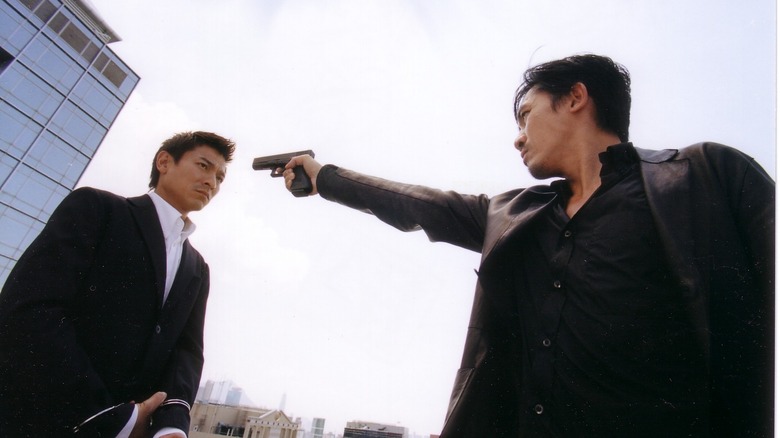
I wrote: Have you ever wondered whether the Hong Kong crime drama that inspired Martin Scorsese's "The Departed" was any good, but were slightly put off by the corny title? I don't blame you, but it would be a shame if you delayed watching "Infernal Affairs" any longer, because it is a doozy of a Hong Kong gangster flick. Starring Tony Leung as an undercover police officer who infiltrates a triad (Leonardo DiCaprio's role in "The Departed"), and Andy Lau as a mole in the police force working for the same gang (Matt Damon's counterpart), "Infernal Affairs" is a dizzying, twisty crime drama that still manages to play out its edge-of-your-seat thrills even if you're deeply familiar with the beats of Scorsese's gangster flick. While its operatic emotion can get feel a little overwrought for the Western viewer, "Infernal Affairs "far outpaces "The Departed" in terms of emotional resonance. Coupled with tremendous performances by both Leung and Lau (the latter of which is far superior to Damon's charmless turn), "Infernal Affairs" might just edge out "The Departed."
Final thoughts: I must speak my truth: "Infernal Affairs" is better than "The Departed."
RRR
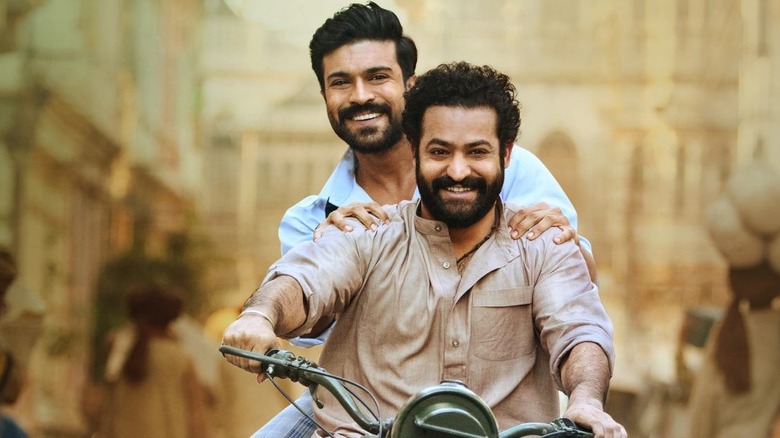
I wrote: What more can be said about "RRR"? The maximalist action epic is so gloriously exuberant and visually extravagant that it puts Hollywood blockbusters to shame. S. S. Rajamouli's global crossover hit is a dozen movies in one, yet beneath all its glistening machismo and cartoonishly heightened action, there lays a pure soul and an earnest affinity for melodrama. Plus, this is a movie where two men, who bonded over the sheer power of their shared masculinity, perform an insane dance number that basically brings down British colonialism. Anti-imperialist epics were never so awesome.
Final thoughts: Like I said, what more can be said about "RRR"? A movie so keen on throwing everything that it can at the screen that it threatens to alter your brain chemistry, "RRR" is a movie that transcends the kind of tiny spotlight I could've given it in this column. It's a movement, it's the moment. It will likely be the gateway movie for many people into the world of Indian cinema. Will it be the watershed moment for Indian films like "Parasite" was for Korean cinema? Maybe, maybe not, but we'll be talking about "RRR" for a long time.
Read this next: The Best Movies Streaming Right Now: Malignant, A Hero, And More
The post Pop Culture Imports: A Look Back at the Best Foreign-Language Movies and TV Featured on This Column appeared first on /Film.
The 18 Best Cate Blanchett Movies, Ranked
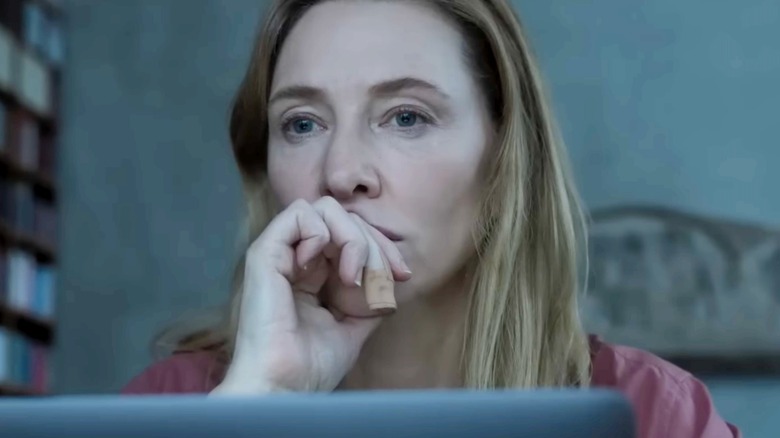
For cinephiles, every Cate Blanchett film is a major event simply because of her participation, but "TÁR" represents the turning of a new page for the actress. The film is both aware of and informed by Blanchett's stature and prowess. It's the most overt sign to date that her commanding screen presence is too big to deny. Her brilliance is now just a commonly held truth.
At this point, declaring that Cate Blanchett is the best actress of her generation should hardly qualify as a controversial statement. She's Gen X's answer to Meryl Streep, both in the consistent quality of her work and her undeniable commitment to the craft of acting. While we've come to expect certain elements from a Blanchett performance — resolute strength, undeniable intelligence, and a flair for the theatrical — each is its own distinct and special experience. And with her interest in producing only just beginning to result in exciting new projects from emerging voices making their way to the screen, Blanchett's cinematic legacy looks like it will extend far beyond her existing filmography.
In celebration of Blanchett's latest career-defining turn, we're taking a look back at 18 of her most notable cinematic achievements. These films cut across nearly a quarter-century and showcase the wide range of the actress' talents and tastes. From epic adventures like "The Lord of the Rings" to quiet dramas like "Carol," from studio comedies like "Ocean's 8" to poetic odysseys like "Knight of Cups," Blanchett's career showcases her deep passion and understanding of the medium across genres and styles. The proof of her brilliance is evident in her varied, versatile output.
Eyes Wide Shut (1999)
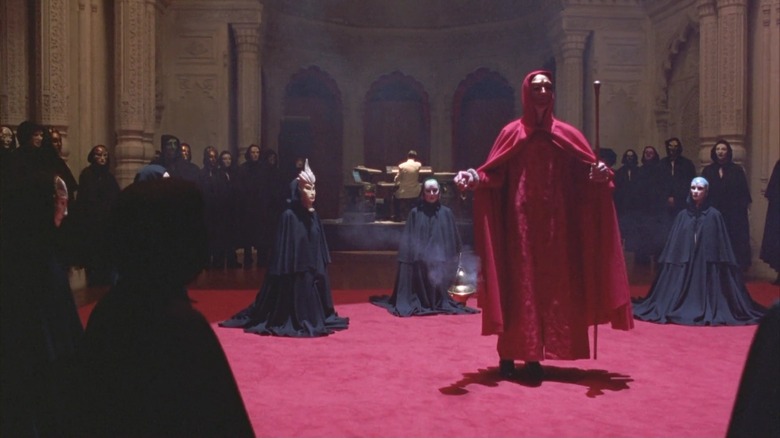
Even for its fans, Stanley Kubrick's final film, "Eyes Wide Shut," has always been something of a mystery wrapped inside an enigma. This cryptic drama about a New York couple slowly coming undone by their jealousy and suspicions is an object of dark fascination and, given that Kubrick died shortly before the film's release, perhaps compulsory reverence. As cinephiles have sat with "Eyes Wide Shut" over time and begun to parse its inscrutability, the film's reputation has only grown (IndieWire recently named it the best movie of the 1990s)
But even as more of the film has revealed itself with the passage of time, certain mysteries have persisted — especially those around the eyebrow-raising masked orgy scenes. At the center of this evening of high-class debauchery is a shrouded figure credited as "Mysterious Woman." She catches the eye of Tom Cruise's Dr. William Harford, a wayward husband who crashes the bacchanalia out of curiosity and covetousness. Actress Abigail Good cuts an imposing physical presence in the frame opposite Cruise, but for two decades, no one knew who provided the character's ominous voice.
For the film's 20th anniversary, an oral history in Vulture finally revealed the vocal artist behind Mysterious Woman: none other than Cate Blanchett. "We wanted something warm and sensual," said the late Kubrick whisperer Leon Vitali, "but that at the same time could be a part of a ritual." In retrospect, it's a bit wild that it took people two decades to figure out Blanchett's participation. Even with just her voice, she provides a complex portrayal of a contradictory character whose chilly charm cannot help but entice anyone around her to try and learn more.
Babel (2006)
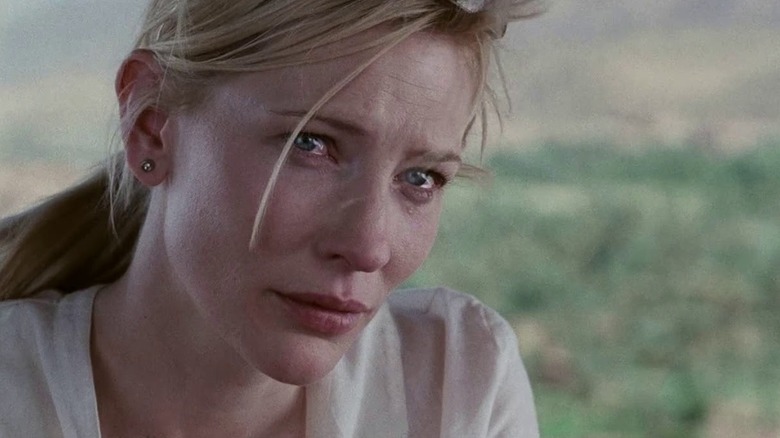
Once upon a time, the internet was not just a hellscape of social isolation and ideological polarization, but a genuine source of hope and connection. The so-called cinematic phenomenon of "hyperlink cinema," which swept prestige filmmaking in the early 2000s, reflected the hope of a world where geographic barriers disappeared and unexpected ties between people emerged. This narrative style received its biggest canvas with Alejandro G. Iñárritu's "Babel," a multinational thriller that charts the ripple effects of a single bullet in a post-9/11 world. The common thread tying all the disparate storylines together? That would be Cate Blanchett's Susan.
Blanchett's actual screen time in "Babel" is quite small, limited to only a few scenes in which she's an active participant. But in those moments, she's present in her emotional absence on vacation with husband Richard (Brad Pitt) in Morocco. In mere minutes, Blanchett establishes the enormity of the rift that's opened up in Susan's marriage while also conveying her disappointment in the disappearance of their love. It's even more impressive that she manages to do this with such scant and vague dialogue.
Both elements are crucial, given that Susan takes an unexpected bullet through the window of their tour bus, which comes from a gun wielded by two local children who received the weapon as an afterthought from their goat-herding father. That a plot of international intrigue opens up from the threat to Susan's fragile life speaks to just how effectively Blanchett convinces us that her onscreen husband cares enough to shake geopolitical cages in the name of her safety.
Ocean's 8 (2018)
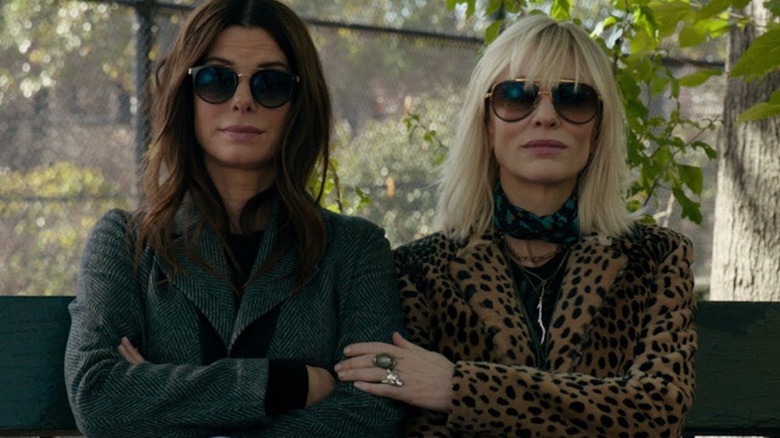
It's only in the past few years that Cate Blanchett has really let herself kick back and do pure popcorn fare — even her earlier blockbusters, like "The Lord of the Rings," had real artistic heft. These days, she's not above participating in the Marvel Cinematic Universe, giving a fun turn as villain Hela in Taika Waititi's "Thor: Ragnarok." But among her crowd-pleasing projects, she pops the most as a colorful member of the girl gang heist team in the breezy "Ocean's 8."
Blanchett's Lou Miller is the right-hand woman to Sandra Bullock's Debbie Ocean, the sister of George Clooney's Danny from the Soderbergh trilogy. Lou is impossibly stylish (that hair! those sunglasses!) as well as incredibly savvy, bridging the gap between strategic planning and streetwise smarts that makes her the unsung MVP in any crew. Blanchett is an able ensemble player amidst a grand cast in "Ocean's 8," and it's to her great credit that her presence never pulls focus from the elaborate jewelry heist at the center of the film. She's always adding more to any scene than she takes from it, even if that means slipping into the background.
Is this a revolutionary, groundbreaking performance from Blanchett? No, of course not. But it's not meant to be, and she deserves to have some fun. Many high-minded actors off-road into studio filmmaking to take a breather from heavy material. The key difference between Blanchett in "Ocean's 8" and the lazier version of this career move is that she lets us in on the fun she's having.
Knight Of Cups (2016)
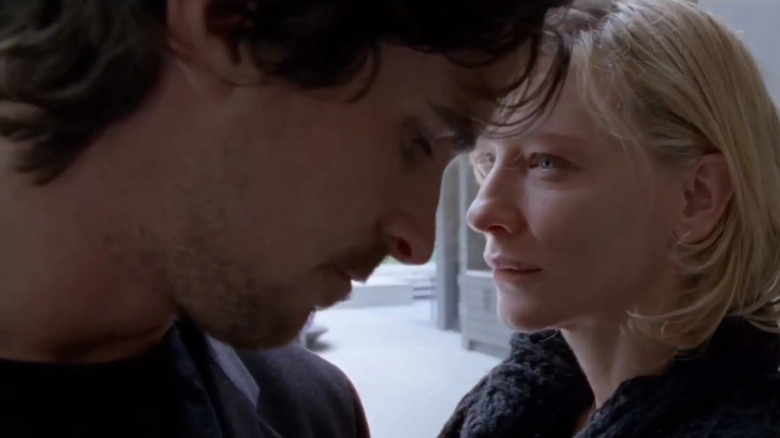
Cinematic poet Terrence Malick has a notorious way of working with actors, shooting vast amounts of footage and then slicing it to pieces during editing. Some actors get cut out altogether or, worse, end up like Adrien Brody, who arrived at the premiere of "The Thin Red Line" assuming that he was the star of the film, only to find his role reduced to nothing. Classically trained actors obsess over their characters' continuity, tracing cause and effect across a linear arc. Malick takes that tool away, or at least makes it unreadable to the audience.
It takes a special performer to thrive in this unconventional environment, so it should come as no surprise that Cate Blanchett has logged multiple collaborations with Malick. She can rise to the occasion, communicating the meaning of a moment in just a stolen glance, or by positioning her body relative to the camera or a character. As such, Blanchett perfectly fits in the ethereal, transitory "Knight of Cups" as Nancy, the ex-wife of protagonist Rick (Christian Bale). The film's title and its structure derive from tarot cards; Nancy's section is simply "Judgment," and she provides a tough reckoning for Hollywood lothario Rick on his fumbling journey of self-discovery. Blanchett can play both a person and an idea at the same time, collapsing allegory and metaphor into one grounded character. It's clear that she let herself become clay for Malick to mold, abandoning any preciousness about her process and giving herself over to the director's vision of the film.
Truth (2015)
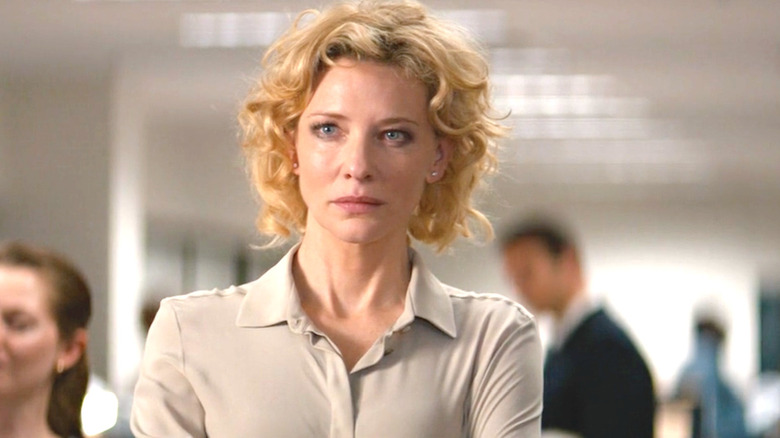
Cate Blanchett occasionally runs into a problem where she delivers too many good performances in a calendar year. Occasionally, awards campaigns can accommodate both in separate categories; she's one of just a dozen actors to ever receive dual Oscar nominations for acting in the same year. However, in 2015 she headlined two films gunning for year-end attention, and one emerged as the clear favorite. The other release that year was "Truth," which was clearly beneath its competition ... and also not worth writing off as a failure.
Even though Blanchett plays the protagonist of "Truth," she's not necessarily the film's main attraction. That would be the legendary Robert Redford, delivering one of his final performances as "CBS Evening News" anchor Dan Rather, a titanic figure in his own right. The film traces the fallout of a 2004 segment in which Rather presented reporting that questioned George W. Bush's military service just as the president geared up for re-election. Bush's allies work the refs, trying to discredit the sourcing and evidence to avoid facing the substance of the claim.
In the fallout, Rather chooses to retire, but he's at the tail end of a storied career anyways. Blanchett's Mary Mapes, the telecast's producer, ends up taking much of the real damage. "Truth," which premiered during the infancy of the Trump phenomenon, now assumes the tenor of a prescient warning from a not-too-distant past. The fourth estate cannot tell truth to power when those in power ignore facts and reality. This rage and fearfulness find an effective vessel in Blanchett, whose performance channels a searingly righteous anger.
Cinderella (2015)
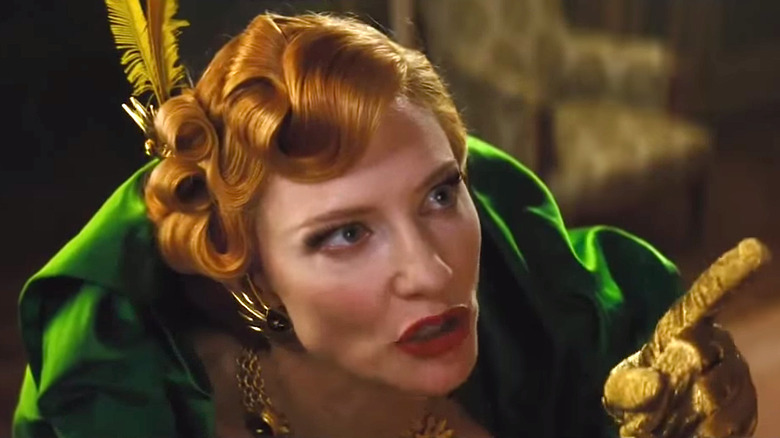
Sure, Kenneth Branagh's live-action remake of "Cinderella" was a canary in the coal mine for the direction that Disney's reimaginings of its animated classics would go. Gone was the model that the Mouse House tested out on Tim Burton's "Alice in Wonderland," which allowed for a little bit of directorial flair. In its place was an almost direct transposition of the animated film that went heavy on fan service, delighting lovers of the original by simply recreating it. If you grew up on the 1950 "Cinderella," this version will probably effectively manipulate your feelings of nostalgia, thereby disguising its status as a carbon copy.
But for those who want — or need — something a little more from "Cinderella," at least Cate Blanchett is in the cast. As Cinderella's wicked stepmother, she brings all the pomp and theatricality to a character who more or less embodies evil itself. But there's more to Blanchett's performance than high camp. She stakes out a middle ground between the flatness of an animated caricature and the dimensionality of a real human, creating an indelible character whose terror cannot be easily dismissed. There's something downright Machiavellian to Blanchett's version of the stepmother, a strategic brilliance that only reads because the actress lets us know that the character has a real mind at work behind those cutting glances. Further, "Cinderella" shows her not just as a necessary impediment to Cinderella's redemption arc, but as a person in her own right, one who has the ability to beguile even good-hearted people. She's all the more frightening for it.
The Lord Of The Rings: The Fellowship Of The Ring (2001)
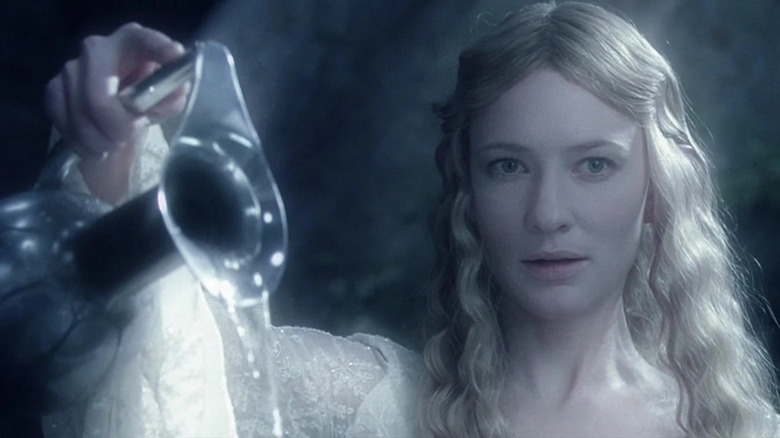
Cate Blanchett's quiet centrality to the success of "The Lord of the Rings" franchise is such that Peter Jackson had to figure out a way to shoehorn Galadriel into "The Hobbit" trilogy despite the character not being in that part of Tolkien's writing. But her performance holds both the promise and peril of the hero's journey, and thus she had to be there. What's remarkable is how her presence in any of these movies, even "The Fellowship of the Ring," always seems far greater than her screen time. Heck, she's only in one scene in "The Two Towers."
In "The Fellowship of the Ring," Blanchett's Galadriel appears toward the end of the proceedings, although she does narrate the film's opening montage, lending the expositional dialogue both grace and firmness. She greets the Fellowship with seemingly welcome arms, but later gives Frodo a frightening glimpse of what his future could be before fighting her own desire to take the ring for herself. She says little, but Jackson's camera frequently manages to capture what hides underneath Galadriel's gentle glances — a terrifyingly powerful and coldly calculating character. In her best work, Blanchett crafts exquisite tension between what she shows and how her character feels, and "The Lord of the Rings" makes that explicit: Galadriel's tranquil surface belies a more sinister self-interest. It's a living testament to the maxim that there are no small parts, only small actors, and no one could ever accuse Blanchett of being the latter.
The Talented Mr. Ripley (1999)
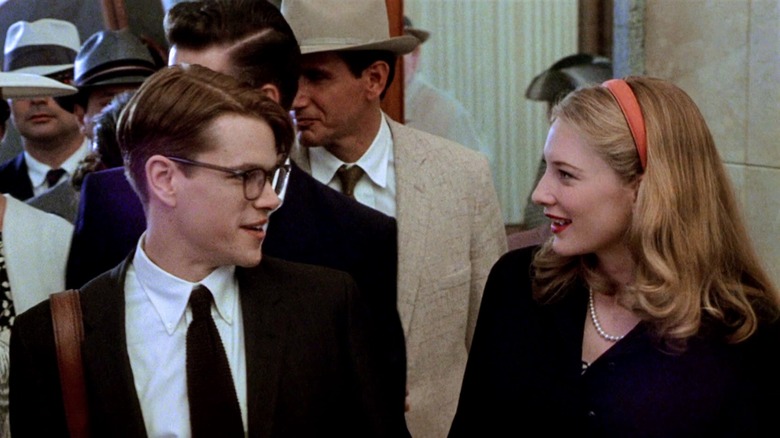
It's incredibly rare to see Blanchett playing someone who isn't the smartest or most powerful person in the room. So, it's quite the performance that she gives in "The Talented Mr. Ripley" as the guileless Meredith Logue, a mid-century American socialite who crosses the path of Matt Damon's conniving and craven Tom Ripley. When she meets him, she's unaware that he's just a working-class striver. With no reason to believe otherwise, she takes the charming fellow at his word and accepts that he's actually Dickie Greenleaf, the wealthy playboy who Ripley must pick up and repatriate back to America.
In Blanchett's hands, Meredith provides a calming presence as the Italian-set intrigue takes a deadly turn. She stands in for the disbelief of the audience, hoping for the best in all circumstances. Her gentility and graciousness make her a compelling counterweight to Ripley, who digs in deeper to his depravity with each passing scene.
Meredith's willingness to suspend disbelief to accommodate Ripley's contortions of the truth is sometimes implausible, but any faults in the character feel like they come from the script rather than Blanchett's performance. She's able to locate that part inside all of us that desperately wants to believe that people are inherently good and trustworthy, even going so far as to discredit all the obvious warning signs. She's also not shy about occasionally playing up Meredith's privilege, which allows her to put up tremendous blinders to the malice lurking around her.
Elizabeth (1998)
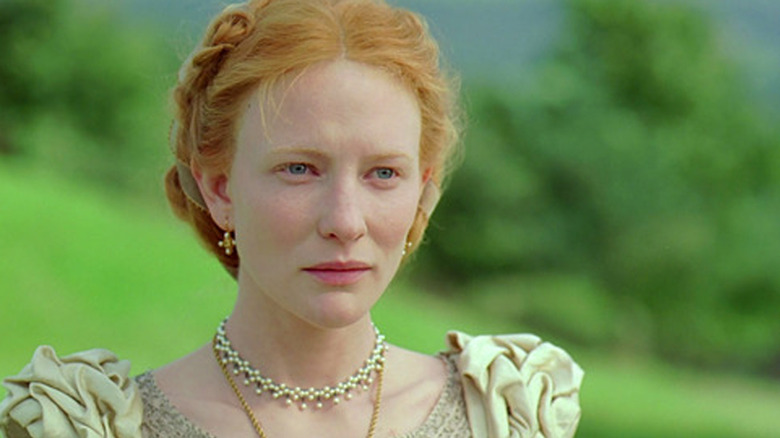
Cate Blanchett's breakout role in 1998's "Elizabeth" also functions like something of a superhero origin story for the actress. A young Blanchett plays Queen Elizabeth I at the beginning of her reign, a time of religious and political turmoil in England when Catholics and Protestants battled for the soul of the nation. After some civil strife with her half-sister, Mary I, she must consolidate power and unite her people. But assuming political power and wielding it are two entirely different things, something Elizabeth must learn for herself as she decides the kind of ruler she wishes to be.
Blanchett would revisit the role nearly a decade later in 2007's "Elizabeth: The Golden Age," once again to Oscar-nominated effect. Yet to simply watch her be Elizabeth does not hold the same fascination as watching her become Elizabeth. Most of Blanchett's roles assume a kind of power and prowess because she effortlessly exudes a sense of authority. "Elizabeth" shows how that disposition is a developed trait, not an inherent quality. Elizabeth starts the film as strong but a bit sheepish. She's easily thrown off course when challenged, especially when the basis for a confrontation has its roots in gender.
Shekhar Kapur's film is at its best when it lets the audience peer in on the mythmaking behind Elizabeth I's public persona. As this film tells it, the image of the Virgin Queen derives largely from her desire to work around the men who court and doubt her in equal measure. Neither Blanchett nor the film superimpose a contemporary feminism onto Elizabeth, though her quest for independence and self-sufficiency as a sovereign does echo powerfully.
Manifesto (2017)
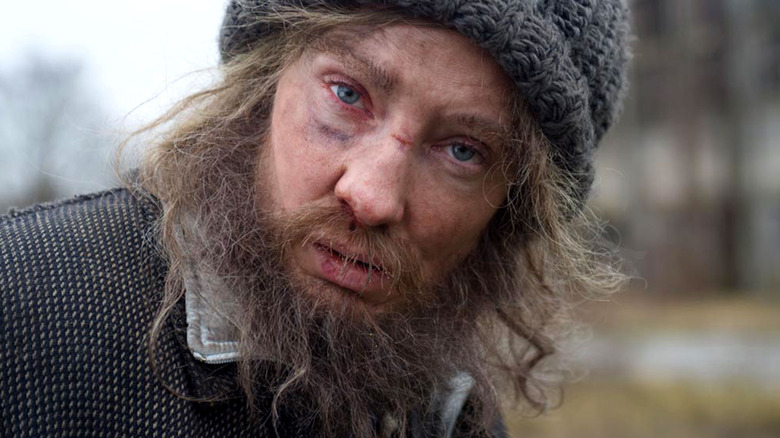
On paper, the idea of someone incanting various artistic and political manifestos at you in direct address sounds more like punishment than pleasure. But when it's Cate Blanchett doing that recitation, the equation changes. In Julian Rosefeldt's "Manifesto" the actress embodies 13 different personas, each of whom pulls quotes from influential manifesto texts that range from Karl Marx to Jim Jarmusch. It's a testament to Blanchett's tremendous versatility that she can assume so many different guises and make each of them as persuasive as they need to be.
"Manifesto" is instructional, but it never feels like a lecture. Though the project was initially envisioned and staged as a gallery installation where each of Blanchett's personas appeared on a screen and reverberated off each other in a large room, it still works as a compartmentalized feature. In one segment, she's a homeless man screeching the tenets of Situationism. In the next, she's a broker praising Futurist ideology. Blanchett also takes on the personas of a schoolteacher, a news reader, a scientist, a garbage worker, a puppeteer, a choreographer, a funeral speaker, and a tattooed punker.
It's the full range from one of our most gifted performers, capturing the essence of archetype so purely that she never gets in the way of the real focus of the project: the words themselves. Through Blanchett's delivery, dry texts come to life before our eyes and break out from the constraints of theory. It's proof that Cate Blanchett does not just make art. She is art.
Nightmare Alley (2021)
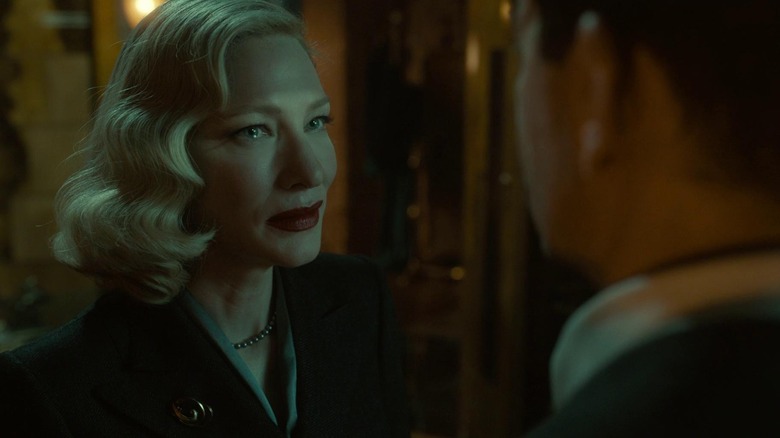
Haters will say it's just a reheat of campy "Carol," but Blanchett is doing some astonishing period work in "Nightmare Alley." It's the kind of performance she could probably do in her sleep at this point, but this is anything but phoned in. Blanchett's take on the classical femme fatale oozes with an authentically sultry sensuality that suits the film noir-era setting. You could place her opposite a Lauren Bacall or a Barbara Stanwyck, and she'd fit right in. Blanchett is every bit as valuable to establishing the period atmosphere as any technical element of Guillermo del Toro's craftsmanship.
Her performance is not just an imitation or incarnation of an idea, either. As Dr. Lilith Ritter, a cunning psychologist, she puts the "arch" in "archetype." Blanchett really gets del Toro's "Nightmare Alley" remake revving when she enters in the film's second half. Her character provides the perfect foil for Bradley Cooper's tortured illusionist, Stanton Carlisle, who perfects his act in a Depression-era circus circuit. She spots both his strength as well as his insecurity in the art of deception, attempting to lure him into a trap of her own with her seductive wiles. In the disguise of a mutually beneficial partnership, she attempts to extract value from someone who she sizes up as a gullible mark. The mental game of cat-and-mouse that plays out between Blanchett and a hungry Cooper is thrilling to watch unfold, even if you've seen the 1947 original and know the result of their tête-à-tête.
Notes On A Scandal (2006)
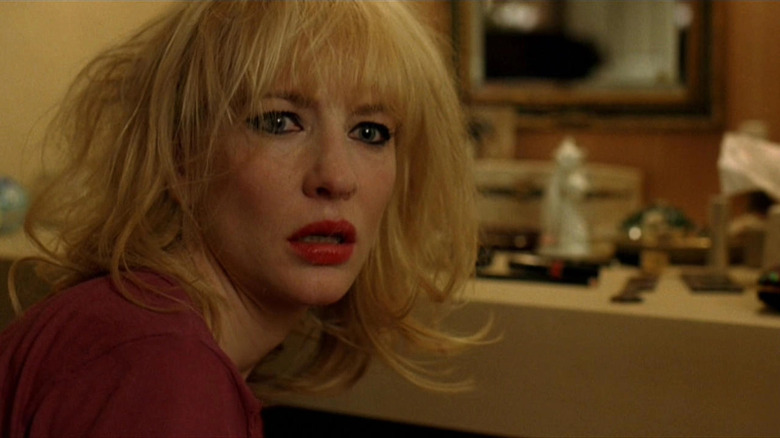
Jet fuel can't melt steel beams, but if there's metal furniture on set and Cate Blanchett cuts her teeth on a scene, she can chew right through it. In "Notes on a Scandal," Blanchett goes for broke as Sheba Hart, a woman whose self-destructive choices push her to a breaking point. She goes maximalist on the maximalism, which is ... a lot. It's also the perfect choice for the film. Blanchett's delectable deviance is totally in keeping with the sensationalist storytelling of the film itself.
Sheba makes one big mistake: releasing her stress and indulging her desires. She's constantly in service to others, be they the students she teaches at school or the special-needs son she cares for at home. She rationalizes that she deserves pleasure as a result, even if it comes from the troubled 15-year-old Steven Connolly. Things get even worse when she becomes enmeshed with crotchety, closeted lesbian Barbara (Judi Dench), who has a twisted agenda of her own. With each step, Sheba finds it harder to crawl out of the pit created by her own mistakes, and Barbara's apparent cover comes with self-serving strings attached.
When Blanchett finally screams Sheba's final line — "Here I am!" — in an act of surrender, it lands with the weight of a bomb. It's a bit overwrought for a domestic drama, sure, but Blanchett conveys the stakes as the character herself experiences them. She might be scenery-chewing in "Notes on a Scandal," but Blanchett is doing some masterful mastication.
I'm Not There (2007)
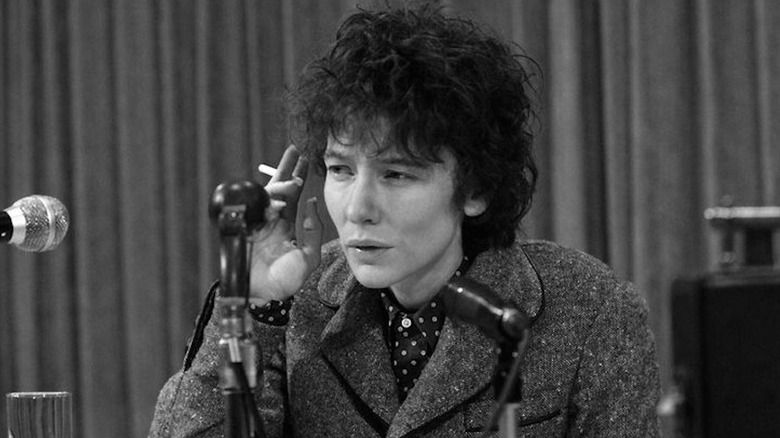
"Chameleonic" is not a word often used to describe Cate Blanchett. While not a hard and fast rule, she does bring a traditionally self-assured, strong persona to each part she plays, and her characters usually look a lot like the actress herself. All that fades away in "I'm Not There," in which Blanchett is one of many pieces of the puzzle that is Bob Dylan. A figure of such intrigue and iconic stature cannot be captured in a standard biopic, so filmmaker Todd Haynes splits the many faces of the musician into six different "characters" who represent one of Dylan's different sides.
Blanchett has the most deceptively simple of the six Dylans. Her "Jude Quinn" is the one who most literally resembles the man himself in both stature and standing. But she's not just doing imitation or caricature. Haynes tasks Blanchett with finding the mystery within the image that fans know so well. Her take on Dylan is present in the way that a cloud of smoke is: palpable, but impossible to capture with your fingers.
Blanchett also navigates the gender ambiguity of playing someone coded "male" in the popular imagination with a unique grace. It doesn't feel like she's a woman playing a man in a gimmicky way. Rather, it appears that Blanchett transcends gender altogether by capturing something larger-than-life in a person who was bigger than such a simple construct to begin with. In a film full of fascinating refractions, Blanchett best captures the project's mission by tapping into something unknown – or perhaps entirely unknowable – within a figure who we think we know everything about.
The Aviator (2004)
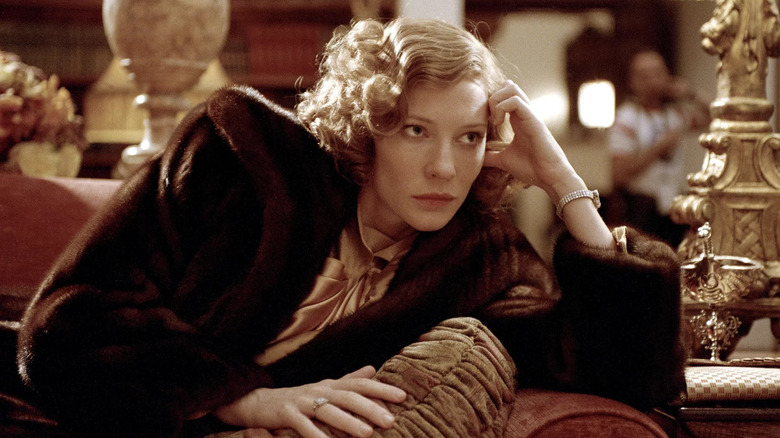
Cate Blanchett won her first Academy Award for playing the actress who has won more of those trophies than any other performer in history: the inimitable Katharine Hepburn. Daring to play such a legend of the silver screen is a commendable challenge, and Blanchett succeeds with flying colors as she captures Hepburn's fizzy, intoxicating charm. As with any performance where the actress portrays a familiar figure, Blanchett's turn in "The Aviator" captures both the image and imagination of the individual without falling back into easy imitation. Her take on Hepburn is studied enough to approximate the actress' presence, but not so academic that it feels robotic. To put it succinctly, she never loses sight of the "person" within the "persona."
It certainly helps that Blanchett's version of Hepburn steals the spotlight whenever she's on screen, but is not the focus of the film. She dips in and out as a frequent flame of Martin Scorsese's subject, Howard Hughes (Leonardo DiCaprio). Such a position frees Blanchett from having to hit a lot of the boring biopic beats, enlivening the film with her punchy wit and sincere soulfulness. Her brief romantic dalliance with Hughes as the brash businessman forays into Hollywood encapsulates Hepburn's overall effect. The notoriously obsessive-compulsive Hughes sees his anxieties fade away as he spends more time with her, a micro-level representation of how Depression-era audiences saw Hepburn as an escape from the harsh realities of the time.
The Curious Case Of Benjamin Button (2008)
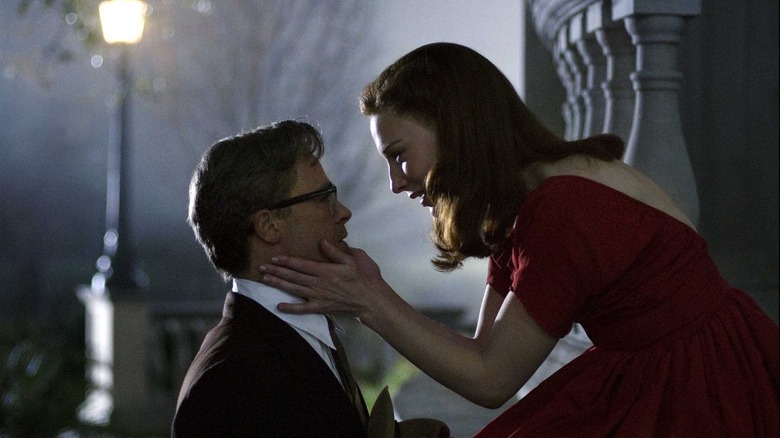
Blanchett usually plays steely, sturdy characters who rarely wear their feelings on their sleeves. That's not to say that she, or her characters, are unemotional. It's just that she rarely leads with vulnerability in her performances. That's why "The Curious Case of Benjamin Button" feels like somewhat of an anomaly in her filmography, and stands as one of her most underappreciated and misunderstood feats.
This odyssey across the American century tracks the titular character, played by Brad Pitt, whose biological clock runs in reverse. He starts life as a shriveled old man and ends it as a toddler. In contrast, the constant object of his affection, Blanchett's Daisy, lives according to time's conventional forward motion. She's a crucial anchor who helps us understand and empathize with Benjamin's journey, struggling to reconcile her passionate approach to life and love with his dispassionate remove. It's no wonder that her deathbed confession frames the story – we see the film through Benjamin's eyes, but feel it through Daisy's heart.
Benjamin has little idea of how to respond to the developments in his life given his singular vantage point, and it's Daisy who tries to help ground him in the meaning of a moment. While he's cautious and timid, she's upfront about her needs and desires. The result of such naked emotionality is exposure to all the swings of fortune that life has to offer, careening between swooning highs and devastating lows. It's an uncommonly earnest and open turn for Blanchett, one that suggests that she may still have untapped reservoirs of earnest sentiment left to unleash.
TÁR (2022)
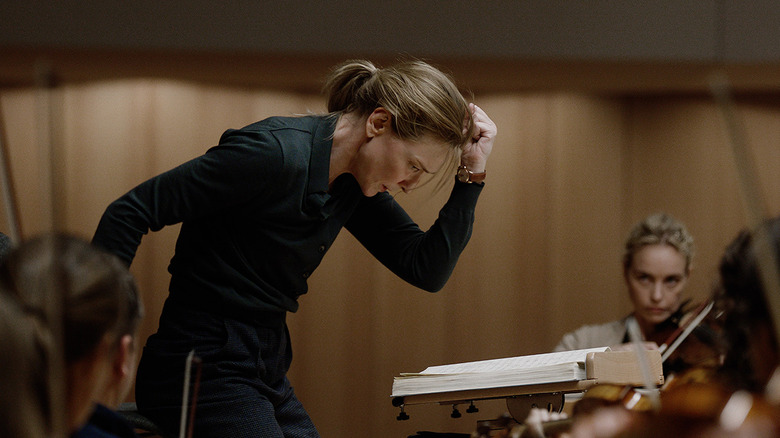
Todd Field's "TÁR" tells us that composer-conductor Lydia Tár is a genius by listing her numerous honors and achievements — She's an EGOT! She was mentored by Leonard Bernstein! — but all that's really necessary is holding the camera on Cate Blanchett's face. At the time of the film's release, her visage is so synonymous with artistic excellence that it does not take much of a lift to believe that she can embody someone at the top of their game.
Field said that he wouldn't have made "TÁR" had Blanchett turned him down, and it doesn't take long to understand why. There's no faking a character like this, one who has the relentless pursuit of artistic accomplishment and professional proficiency in their bones. It requires a meta-level transposition of performer onto character. The astonishing impact of Blanchett's cinematic creation confirms her cellular understanding of what it means to channel the sublime. The film assumes the tenor of a dissertation — or perhaps an apologia — on craftsmanship and commitment, as Tár's final push for a number of elusive career grails portends her undoing.
Her discontent with her current station, even as celebrated as she is, establishes Tár as the contemporary incarnation of a Greek tragic hero. Though she pugnaciously battles the swirling forces portending her demise, she cannot fight off the fate she tempts by acting as if she were invincible. "TÁR" leaves it up to the viewer to decide whether this cruel, confident, clever figure deserves what comes to her, but Blanchett never leaves the slightest bit of doubt about her character's complete conviction in her own correctness, and that spectacle proves irresistible to watch implode before our eyes.
Carol (2015)
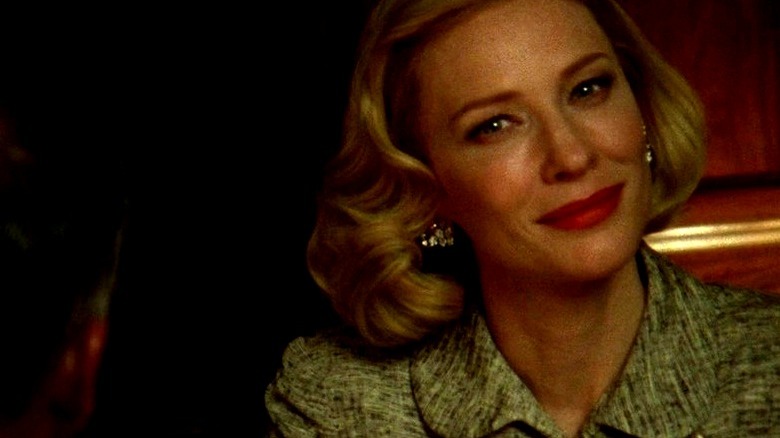
Blanchett's second team-up with "I'm Not There" director Todd Haynes resulted in what is perhaps her most technically accomplished turn to date. As the titular character in "Carol," a sincere recreation of mid-century melodrama, she's as precise as ever while giving a performance within a performance. Her Carol Aird is a '50s housewife and mother living in the suburban comforts of Connecticut, but she's role-playing her fondness for the comforts of American post-war prosperity. Carol harbors a secret desire for other women, which she cannot help but sublimate in symbolic exchanges with objects of her lustful gaze. The film follows the fallout from her unexpected meet-cute with Therese Belivet (Rooney Mara), a naïve department store clerk and aspiring photographer.
Given the extreme constraints of the setting, the two women cannot afford to openly express their love. Instead, affection is passed between Carol and Therese through coded language and pregnant pauses, as well as body language and stolen touches. "Carol" is a film of submerged passions so strong that they cannot help but bubble up to the surface, with calamitous ramifications.
In every bit of her performance, Blanchett ably conveys the vast chasm between what her characters does or says and how she actually feels. There's an irony necessary to Carol's existence that occasionally manifests as campiness, some of which does come through in Haynes' dollhouse-like environment. But as Carol strives to find the conditions where she can live according to the guidance of her heart, Blanchett's performance is overwhelming in its sincerity of spirit. The tragedy of "Carol" is not that these two women fell in love; it's that the world around them lacks any vision for what to do with that love.
Blue Jasmine (2013)

Picking the best Cate Blanchett performance is an impossible task, so perhaps it's best to let the top selection be the one in which she's firing across the most cylinders in a single package. "Blue Jasmine" is Blanchett in full bloom, martialing her most extravagant instincts as a performer into a portrayal of a woman who's never more than one missed antidepressant away from a total collapse. The titular Jasmine is a character of her own making, as the working-class Jeannette foreswears her working-class origins by changing her name and marrying into the Manhattan socialite class. After the downfall of her former husband, a thinly veiled analogue of Bernie Madoff, she's forced to confront the end of the fiction by moving in with her sister Ginger (Sally Hawkins) and her abrasive lover, Chili (Bobby Cannavale).
This high-wire act of a performance captures Blanchett's heightened unreality and theatricality as she does a modern take on Blanche DuBois from "A Streetcar Named Desire." When grandeur dissolves into delusion, can Jasmine simply live inside the illusion and ignore the tense family drama around her? Jasmine teeters precariously on the edge of a total nervous breakdown as she tries to bend reality to her will. However, Blanchett never lets Jasmine disappear so far into the mirage that she loses her tether to humanity.
The raw emotionality of Jasmine's retreat into fantasy is handled with compassion and conviction. Blanchett strips away all of her character's wealth and privilege until we're left with nothing more than a shaking, shattered shell of a woman. She begs for our compassion, or at least our pity. In spite of everything we've seen this character do, Blanchett makes it tempting to go against our better judgment and give it to her.
Read this next: The Best Movies Of 2022 So Far
The post The 18 Best Cate Blanchett Movies, Ranked appeared first on /Film.
Colorful Launches iGame GeForce RTX 4080 16GB GPUs In Advanced & Ultra Flavors, Starting at $1249 US

Colorful Technology announced two new graphics cards from the NVIDIA GeForce RTX 4080 series. The company releases the iGame GeForce RTX 4080 16GB Advanced OC and Ultra W OC GPUs. Both graphics cards will provide a new physical design but still offer the same performance and power that Colorful Technology is known for.
COLORFUL releases new iGame GeForce RTX 4080 16 GB graphics cards with overclocking capabilities
The iGame GeForce RTX 4080 Advanced OC does offer a slight change to its core. The graphics card will receive the new Gravity Rim central fan design, which is an alteration to the original iGame Energy Core used in previous GPUs from the series and comes in at 96mm in size. The other two fans will utilize the newest Hurrican Scythe Blade design, measuring 100mm. The design is previously seen on the company's iGame GeForce RTX 4090 Vulcan OC-V GPU. The overall design of the Advanced OC GPU is considered "stealthier" and "simpler" compared to previous generations.

The metal backplate reduces PCB flexing and adds to the aesthetics of the new iGame GeForce RTX 4080 Advanced OC graphics card. Near the rear input and output of the GPU is the single overclocking button to increase performance without entering the PC case. The back panel is hollow to allow essential heat dissipation and proper airflow compared to other standard graphics cards. Lastly, Colorful's iGame Center software lets users control the RGB coloring on the graphics card.
Key Features
- Gravity Rim: A redesigned version of the iGame Energy Core that creates a mysterious black hole effect.
- Meteorite Backplate: A sturdy metal backplate that reduces PCB flexing. An intricate iGame grille design is added to the backplate’s hollow back to add aesthetics.
- Hurricane Scythe Blades: New fan blade design that delivers superior airflow compared to the previous-generation Storm Chaser fan design. The Advanced OC uses two 100mm fans and a 96mm center fan.
- One-Key Overclock: A conveniently placed button located at the rear I/O that activates overclocking function for a quick and easy performance boost without opening the software.
- Hollow Back Panel: A hollow back panel design that allows airflow to freely pass through the heatsink. This design greatly improves heat dissipation compared to conventional GPU air cooling designs.
- Customizable RGB Lighting: COLORFUL is all about adding a touch of colors to your gaming PC. The graphics card features RGB lighting that is fully customizable using the iGame Center software.

The Colorful iGame GeForce RTX 4080 16GB Ultra W offers the newest aesthetic change compared to previous generations. The new graphics card provides a three-fan design to complete adequate cooling while offering the new 12VHPWR connectors. The Ultra W GPU has a "Retro RGB side panel" that shows the Ultra branding. This high-performance graphics card introduces a significantly larger heatsink "with five 5mmØ + two 8mmØ copper heat pipes fitted with three 100mm cooling fans." The Ultra W also offers the one-key overclocking near the I/O ports located on the rear of the card and a hollow back panel.
Key Features
- ULTRA Retro RGB: Eye-catching and visualizing RGB lighting effect in a retro design.
- ULTRA Cooling: The Ultra Series are designed with high-performance cooling in mind – featuring a large heatsink with five 5mmØ + two 8mmØ copper heat pipes fitted with three 100mm cooling fans.
- One-Key Overclock: A conveniently placed button located at the rear I/O that activates overclocking function for a quick and easy performance boost without opening the software.
- Hollow Back Panel: A hollow back panel design that allows airflow to freely pass through the heatsink. This design greatly improves heat dissipation compared to conventional GPU air cooling designs.
- Customizable RGB Lighting: COLORFUL is all about adding a touch of colors to your gaming PC. The graphics card features RGB lighting that is fully customizable using the iGame Center software.

The Colorful iGame GeForce RTX 4080 16GB Advanced OC-V graphics card retails for $1289 while the Ultra W OC-V GPU retails for $1249. Following is the full price list:
- iGame GeForce RTX 4080 16GB Advanced OC-V: $1289
- iGame GeForce RTX 4080 16GB Ultra W OC-V: $1249
The post Colorful Launches iGame GeForce RTX 4080 16GB GPUs In Advanced & Ultra Flavors, Starting at $1249 US by Jason R. Wilson appeared first on Wccftech.
NVIDIA GeForce RTX 4080 16 GB Gaming Performance & 3DMark Benchmarks Leak Out, Up To 85% Faster Than RTX 3080

NVIDIA's GeForce RTX 4080 16 GB graphics card doesn't launch until next week but its full gaming and 3DMark performance benchmarks have leaked out.
NVIDIA GeForce RTX 4080 16 GB Graphics Card's Gaming And 3DMark Performance Benchmarks Leak
The NVIDIA GeForce RTX 4080 16 GB graphics card has seen various leaks, beginning with its Geekbench 5 performance numbers followed by synthetic benchmarks from Chiphell & now, gaming benchmarks from Twitter leaker, MEGAsizeGPU. All these leaks give us a taste of what might one expect from the upcoming graphics card which is positioned as an ultra-enthusiast product for a starting price of $1199 US. But before we get into the performance, let's see the specifications once again.
NVIDIA GeForce RTX 4080 16 GB 'Official' Specifications
The NVIDIA GeForce RTX 4080 16 GB graphics card will utilize a cut-down AD103-300 GPU configuration with 9,728 cores or 76 SMs enabled of the total 84 units whereas the previous configuration offered 80 SMs or 10,240 cores. While the full GPU comes packed with 64 MB of L2 cache and up to 224 ROPs, the RTX 4080 would end up with 48 MB of L2 cache and lower ROPs too due to its cut-down design. The card is expected to be based on the PG136/139-SKU360 PCB. The graphics card is said to offer a peak clock rate of 2505 MHz.

As for memory specs, the GeForce RTX 4080 features 16 GB GDDR6X capacities that will be adjusted at 22.5 Gbps speeds across a 256-bit bus interface. This will provide up to 720 GB/s of bandwidth. This is still a tad bit slower than the 760 GB/s bandwidth offered by the RTX 3080 since it comes with a 320-bit interface but a lowly 10 GB capacity. To compensate for the lower bandwidth, NVIDIA could be integrating a next-gen memory compression suite to make up for the 256-bit interface.
- NVIDIA GeForce RTX 4080 16 GB "Official" TBP - 320W
- NVIDIA GeForce RTX 3080 12 GB "Official" TBP - 350W
NVIDIA GeForce RTX 40 Series Official Specs:
| Graphics Card Name | NVIDIA GeForce RTX 4090 | NVIDIA GeForce RTX 4080 | NVIDIA GeForce RTX 4070 Ti |
|---|---|---|---|
| GPU Name | Ada Lovelace AD102-300 | Ada Lovelace AD103-300 | Ada Lovelace AD104-400 |
| Process Node | TSMC 4N | TSMC 4N | TSMC 4N |
| Die Size | 608mm2 | 378.6mm2 | 294.5mm2 |
| Transistors | 76 Billion | 45.9 Billion | 35.8 Billion |
| CUDA Cores | 16384 | 9728 | 7680 |
| TMUs / ROPs | 512 / 176 | 320 / 112 | 240 / 80 |
| Tensor / RT Cores | 512 / 128 | 304 / 76 | 240 / 60 |
| Base Clock | 2230 MHz | 2210 MHz | 2310 MHz |
| Boost Clock | 2520 MHz | 2510 MHz | 2610 MHz |
| FP32 Compute | 83 TFLOPs | 49 TFLOPs | 40 TFLOPs |
| RT TFLOPs | 191 TFLOPs | 113 TFLOPs | 82 TFLOPs |
| Tensor-TOPs | 1321 TOPs | 780 TOPs | 641 TOPs |
| Memory Capacity | 24 GB GDDR6X | 16 GB GDDR6X | 12 GB GDDR6X |
| Memory Bus | 384-bit | 256-bit | 192-bit |
| Memory Speed | 21.0 Gbps | 23.0 Gbps | 21.0 Gbps |
| Bandwidth | 1008 GB/s | 736 GB/s | 504 GB/s |
| TBP | 450W | 320W | 285W |
| Price (MSRP / FE) | $1599 US | $1199 US | TBD |
| Launch (Availability) | 12th October 2022 | 16th November 2022 | 5th January 2023 |
According to the GPU-z screenshots published by MEGAsizeGPU, the NVIDIA GeForce RTX 4080 16 GB graphics card peaks out at 2910 MHz at stock while running at 66.5C at its standard 320W TGP. It is not mentioned what kind of stress test or application was used to record this but based on the board power draw, it is likely that Furmarkor a similar stress test was used here since games don't actually push the GPUs to their full TGP.

NVIDIA GeForce RTX 4080 16 GB "Leaked" Synthetic Benchmarks
Starting with the synthetic benchmarks first, the NVIDIA GeForce RTX 4080 graphics card scores 28599 points in the 3DMark Time Spy (standard) benchmark. This is a 36% performance uplift vs the 3090 Ti, a 61% uplift over the RTX 3090, and around 20% slower than the RTX 4090 flagship.

3DMark Time Spy Graphics
In the more intensive 3DMark Time Spy Extreme benchmark, the graphics card end up scoring 14178 points at stock and 15062 points when overclocked. This is 26-30% faster than the 3090 Ti, 60-65% faster than the RTX 3080, and 25-20% slower than the RTX 4090 graphics card.

3DMark Time Spy Extreme Graphics
In 3DMark Port Royal, the graphics card publishes a score of 17650 points at stock and 18941 points when overclocked. This is 20-25% faster than the RTX 3090 Ti, 55-60% faster than the RTX 3080, and 30-25% slower than the RTX 4090 graphics card.
3DMark Port Royal Score
Finally, we have the 3DMark DXR Ray Tracing feature test where the graphics card scored 87.12 FPS. Here, the NVIDIA GeForce RTX 4080 16 GB graphics card ends up 47% faster than the 3090 Ti, 86% faster than the RTX 3080, and 39% slower than the RTX 4090 flagship.

3DMark Pure Ray Tracing Feature Test
NVIDIA GeForce RTX 4080 16 GB "Leaked" Gaming" Benchmarks
The NVIDIA GeForce RTX 4080 16 GB graphics card has also been tested within various games by both leakers. In the case of Chiphell, the benchmarks were carried out on an AMD Ryzen 5 7600X and AM5 test platform while comparisons have been made with an RTX 4090 running on an Intel Core i9-12900KF and compiled by Videocardz as posted below (4K):
NVIDIA GeForce RTX 4090 vs RTX 4080 (Credits: Videocardz):
- Forza Horizon 5: 147 FPS vs 127 FPS (+15.7%)
- Shadow of the Tomb Raider: 179 FPS vs 129 FPS (+ 38.8%)
- Red Dead Redemption 2: 129 FPS vs 99 FPS (+30.3)
- Cyberpunk 2077: 111 FPS vs 83 FPS (33.7%)
- COD MW2: 137 FPS vs 127 FPS (+7.9%)
NVIDIA RTX 4080 4K Gaming Benchmarks (Image Credits: MEGAsizeGPU):
NVIDIA RTX 4080 2K Gaming Benchmarks (Image Credits: MEGAsizeGPU):
NVIDIA RTX 4080 4K Gaming Benchmarks (Image Credits: Chiphell Forums):
Based on the leaked performance figures, it looks like the NVIDIA GeForce RTX 4080 at $1199 US will have a tough time competing against AMD's $999 US Radeon RX 7900 XTX or even the $899 RX 7900 XT graphics cards. The graphics card launches almost a month prior to AMD's release so we won't know for sure how the performance compares until mid of December.
The post NVIDIA GeForce RTX 4080 16 GB Gaming Performance & 3DMark Benchmarks Leak Out, Up To 85% Faster Than RTX 3080 by Hassan Mujtaba appeared first on Wccftech.
Patch Tuesday, November 2022 Election Edition
Let’s face it: Having “2022 election” in the headline above is probably the only reason anyone might read this story today. Still, while most of us here in the United States are anxiously awaiting the results of how well we’ve patched our Democracy, it seems fitting that Microsoft Corp. today released gobs of security patches for its ubiquitous Windows operating systems. November’s patch batch includes fixes for a whopping six zero-day security vulnerabilities that miscreants and malware are already exploiting in the wild.

Probably the scariest of the zero-day flaws is CVE-2022-41128, a “critical” weakness in the Windows scripting languages that could be used to foist malicious software on vulnerable users who do nothing more than browse to a hacked or malicious site that exploits the weakness. Microsoft credits Google with reporting the vulnerability, which earned a CVSS score of 8.8.
CVE-2022-41073 is a zero-day flaw in the Windows Print Spooler, a Windows component that Microsoft has patched mightily over the past year. Kevin Breen, director of cyber threat research at Immersive Labs, noted that the print spooler has been a popular target for vulnerabilities in the last 12 months, with this marking the 9th patch.
The third zero-day Microsoft patched this month is CVE-2022-41125, which is an “elevation of privilege” vulnerability in the Windows Cryptography API: Next Generation (CNG) Key Isolation Service, a service for isolating private keys. Satnam Narang, senior staff research engineer at Tenable, said exploitation of this vulnerability could grant an attacker SYSTEM privileges.
The fourth zero-day, CVE-2022-41091, was previously disclosed and widely reported on in October. It is a Security Feature Bypass of “Windows Mark of the Web” – a mechanism meant to flag files that have come from an untrusted source.
The other two zero-day bugs Microsoft patched this month were for vulnerabilities being exploited in Exchange Server. News that these two Exchange flaws were being exploited in the wild surfaced in late September 2022, and many were surprised when Microsoft let October’s Patch Tuesday sail by without issuing official patches for them (the company instead issued mitigation instructions that it was forced to revise multiple times). Today’s patch batch addresses both issues.
Greg Wiseman, product manager at Rapid7, said the Exchange flaw CVE-2022-41040 is a “critical” elevation of privilege vulnerability, and CVE-2022-41082 is considered Important, allowing Remote Code Execution (RCE) when PowerShell is accessible to the attacker.
“Both vulnerabilities have been exploited in the wild,” Wiseman said. “Four other CVEs affecting Exchange Server have also been addressed this month. Three are rated as Important, and CVE-2022-41080 is another privilege escalation vulnerability considered Critical. Customers are advised to update their Exchange Server systems immediately, regardless of whether any previously recommended mitigation steps have been applied. The mitigation rules are no longer recommended once systems have been patched.”
Adobe usually issues security updates for its products on Patch Tuesday, but it did not this month. For a closer look at the patches released by Microsoft today and indexed by severity and other metrics, check out the always-useful Patch Tuesday roundup from the SANS Internet Storm Center. And it’s not a bad idea to hold off updating for a few days until Microsoft works out any kinks in the updates: AskWoody.com usually has the lowdown on any patches that may be causing problems for Windows users.
As always, please consider backing up your system or at least your important documents and data before applying system updates. And if you run into any problems with these updates, please drop a note about it here in the comments.
Microsoft Defender Experts for Hunting demonstrates industry-leading protection in the 2022 MITRE Engenuity ATT&CK® Evaluations for Managed Services
Microsoft Defender Experts for Hunting, our newest managed threat hunting service, delivered top-class results during the inaugural MITRE Engenuity ATT&CK® Evaluations for Managed Services. Defender Experts for Hunting provided a seamless, comprehensive, and rapid response to the simulated attack using expert-led threat hunting and an industry-leading platform—Microsoft 365 Defender.
The post Microsoft Defender Experts for Hunting demonstrates industry-leading protection in the 2022 MITRE Engenuity ATT&CK® Evaluations for Managed Services appeared first on Microsoft Security Blog.
Why the 80% Retirement Rule Is B.S.

Retirement planning can be complex, so boiling it down to a couple of simple rules of thumb is comforting. One retirement “rule” that gets tossed around a lot is the “80% rule” (the precise percentage varies a bit depending on who you’re talking to): It suggests you will need 80% of your pre-retirement income in order…
New Dying Light 2 Update 1.7.2 Adds Support for Bloody Ties DLC, Adds X-Ray Feature Alongside New Intel XeSS Upscaler and More

Dying Light 2 update 1.7.2 has been rolled out by Techland, adding support for the game’s first story expansion – the Bloody Ties DLC.
The update is available now and should download automatically if this option has been enabled. Aside from the above-mentioned DLC support, the update also brings back the X-Ray feature and adds a new Intel XeSS upscaler. In addition, this update packs numerous fixes and QoL improvements. You’ll find the official release notes down below:
Dying Light 2 Update 1.7.2 Release Notes
Bloody Ties DLC is here! (available on November 10th)
Who doesn’t want hundreds of fans chanting their name in perfect unison? Or feel like they are loved and admired while obtaining unimaginable riches at the same time? But what if, to have it all, one must first pay the highest price?
Play The First Story DLC:
- Discover a New Location — venture to Carnage Hall, the epicenter of splendor, death, fame, barbarity, fortune, and bloodshed. The place where the greatest fighters battle for glory!
- Experience a New Narrative – secure a spot in the Pantheon of the best fighters, and make tough choices as the plot for power and revenge reaches its tipping point.
- Behold… the Carnage Manica! — tap into the power barricade that is the Carnage Manica and take hold of new weapons to make creative combat that much more creative.
- Fight the Freaks — face off against hordes of new Infected like the towering Gorilla Demolisher, fire-spewing Inferno, and many others!
X-Ray – First Phase
The all-time loved feature from Dying Light is back! X-ray is available and will make your gameplay more memorable! Please keep in mind that this is the first phase of this feature, and we will work in the future to make it iconic for Dying Light 2 Stay Human – your feedback is appreciated, so smash some bones and let us know what you think about it!
Game Update
In update 1.7.2, apart from introducing Bloody Ties DLC, we’ve worked on multiple QoL changes and major issues that did not allow you to enjoy the game to the fullest. Check the entire list below:
Gameplay Updates
- The Nights in The City got darker! Overall darkness is way deeper than before
- Throwable items trajectory implemented
- Players can now run in the PK ship HUB
- Outfits preview is available
- Fixed an issue with the achievements not being granted to the players upon completion
- Players will no longer be able to travel outside the playable area in Let’s Waltz quest
- Waltz in Let’s Waltz quest will no longer be idle
- You can no longer get stuck in a car during the Let’s Waltz quest
- During the Let’s Waltz quest, toxic chemicals will reduce the player’s infection as usual
- Fixed an issue where UV Safezone in Main Terminal Station was not fully functional
- Hakon won’t fall asleep on the mattress in the Getting Stronger quest, allowing players to progress with the quest
- The toxic area near Downtown and The Wharf will deal damage again
- Howler’s alert indicator will be shown correctly
- The death screen will be shown correctly when defeated in the Challenge
- Collectibles from Chapter 2 will not count toward the achievements
- Fixed an issue where the grappling hook was unavailable during Hooked on the Thrill Challenge, and Nightrunner Trial 3
- Multiple Challenges got fixed objective count and timers
- The Wharf water tower will be correctly assigned to Peacekeepers upon the player’s decision
- Virals will hear better, reacting to various sounds with more intensity
- Fixed an issue where the Infected becomes unresponsive and dies
- Damage scaling for fists and dropkicks is fixed, no longer allowing players to box through the game easily
- You can no longer fall through the elevator
- Fixed an issue with “Leaving the mission area” during the Twin Brothers’ quest
- Added a new Craftmaster upgrading tutorial for the new players
- The wardrobe is no longer blocking the exit in one of the safe zones
- Frank’s door at the Fish Eye is now open during Explore Villedor mode, which will allow plates to get a collectible located there
- Fixed AI outline during Rage Mode in one of the story quests
- Fixed issues with Stamina not depleting during some of the Nightrunners’ trials
Co-op Updates
- Users won’t encounter a black screen while activating windmill when one of the players is respawning
- Animation of grabbing the player by infected should no longer freeze
- You can now leave the game if the host dies during certain story quests
- Fixed user’s online ID disappearing during some activities in co-op
UI/UX Updates
- Removed a glitch where a white box showed up when LMB was clicked
- Fixed a display timer on Challenges from Chapter 1
- Players will be no longer to see outside the map with the Photo Mode
- Fixed lighting inside buildings during the day
- AI clothes will not stretch in a long distance
- Fixed some missing textures in the bazaar
- Beehives are more aligned with the trees in the Prologue
- Fixed the sound glitch that did not play any sound during the death screen
- Biters will ragdoll correctly when dropkicked
- Raindrops will be appropriately displayed on the water’s surface
- Aiden’s Stash text fixes
- Multiple Lightning/Brightness tweaks
- Fixed an issue with previously looted bags being highlighted during survival sense
- Fixed issues with missing textures
- Parts of the player’s outfits are now displayed correctly in Photomode, and inventory
- Fixed an issue with parkour music being stuck on one track indefinitely
Technical Updates
- Fixed an issue where using a rollback feature might lead to the game crashing
- Fixed the framerate drop issue that was happening randomly after a few hours of gameplay
- Fixed an issue with random crashes during the combat
- Players will no longer be stuck in the infinite loop after launching the game in Steam Offline mode
- Fixed multiple crashes on consoles
- Fixed random freezes when changing some options
- Fixed textures in X13
- Fixed D3D failed to execute error
- Fixed occasional crashes when playing with Video Settings set to D3D12 Ultimate Raytracing
- New Intel XeSS upscaler available
- Screen space reflections are now more stable & capable of reflecting particles
- Improved water rendering
- Improved water ambient lighting
- Improved water screen space reflections
- Water is now able to reflect reflection probes in the interiors
- Water & fog interaction is enhanced.
- The default sharpness value for upscalers closer resembles the native result
- Ray-tracing VRAM consumption reduced (up to 1G)
Dying Light 2 is available globally now for PC and consoles.
The post New Dying Light 2 Update 1.7.2 Adds Support for Bloody Ties DLC, Adds X-Ray Feature Alongside New Intel XeSS Upscaler and More by Aernout van de Velde appeared first on Wccftech.
Doom Eternal composer responds to id Software exec's "hurtful lie", two years later
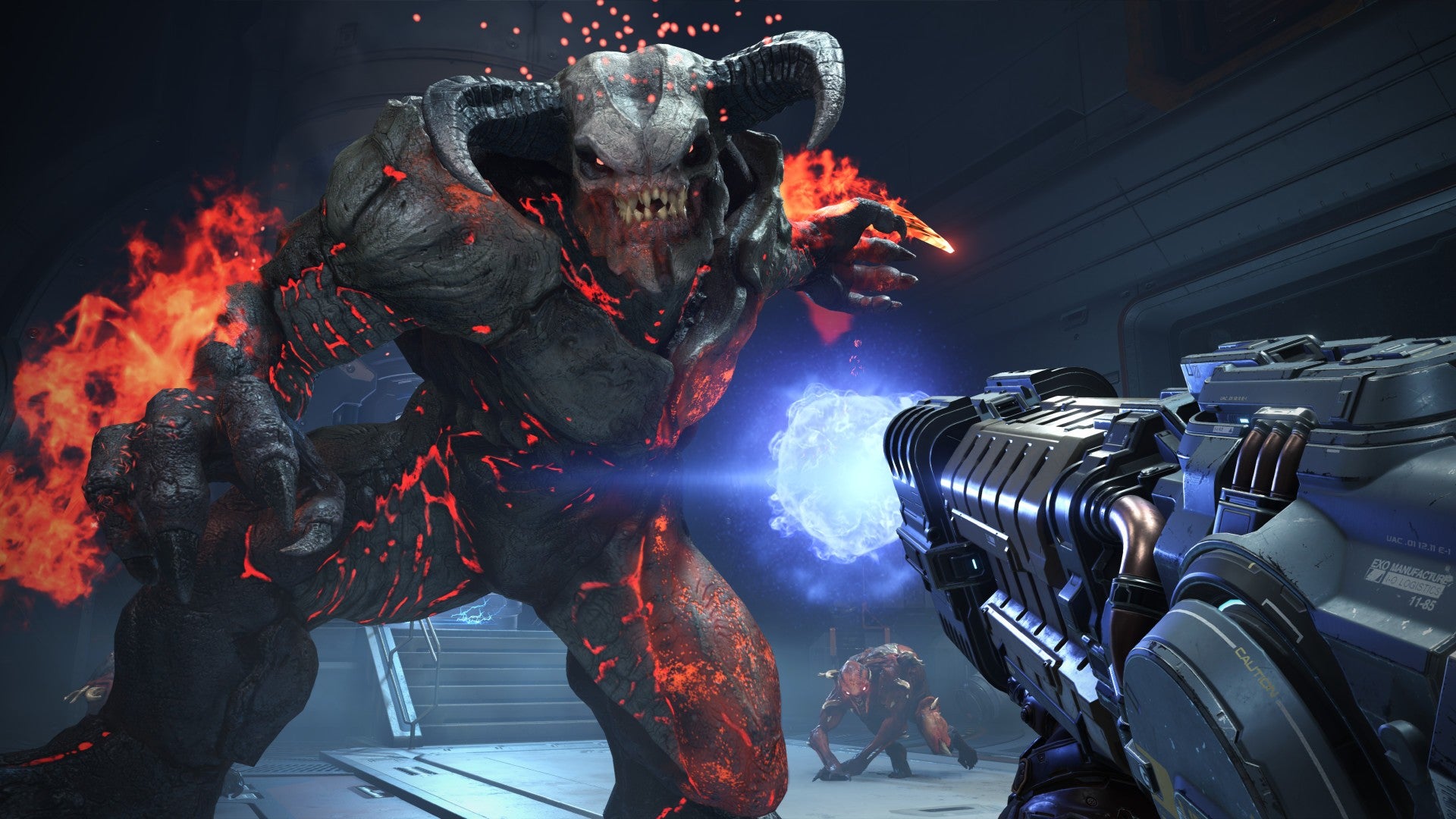
Composer Mick Gordon has published a rebuttal to an open letter by id Software executive producer Marty Stratton concerning Doom Eternal's soundtrack. Stratton's post was written all the way back in May 2020, and Gordon's response is a doozy. “Marty lied about the circumstances surrounding the DOOM Eternal Soundtrack and used disinformation and innuendo to blame me entirely for its failure,” Gordon said in the post on Medium. Gordon claims that Stratton later offered a six-figure amount if he never spoke about the matter, but Gordon insists he turned the money down.
Who is the Gun Devil in Chainsaw Man?
Chainsaw Man episode 5, titled Gun Devil, arrived on Crunchyroll. We saw Makima instructing Denji to kill the Gun Devil, one of the strongest Devils whom all the devil hunters want to kill. However, no one is aware of his whereabouts. Well, the episode did not let us meet the Gun Devil, but we may get to see him in the next episode. Until then, let’s look at this article, where we have talked about the devil.
Warning: Spoilers from the Chainsaw Man manga ahead
The latest episode of the newest anime showed Makima telling Denji how fear of guns in people brought Gun Devil to life. The devil first appeared during a terrorist attack, but after that, he disappeared, and since then, all the devil hunters have been looking for him.
Chainsaw Man | Main Trailer
Chainsaw Man’s Gun Devil Explained
Several years ago, when the devils took over the world, the manufacturing of guns increased so that civilians could protect themselves. However, several people used it to commit crimes, due to which fear of guns among everyone increased. Moreover, a terrorist attack destroying half of America gave birth to the Gun Devil.
The devil came into existence due to the fear of guns, so its body, especially its forearms and legs, were made of gigantic guns. His face looked like a skeleton. After coming to life, he caused massive destruction, killing almost a million people in a few minutes.
Talking about its abilities, the Gun Devil possesses immense speed and high durability due to its build.
How does Aki Hayakawa become Gun Devil?
The Gun Devil killed Aki’s family when he was young, so since then, killing the devil has been his only motive. However, he couldn’t kill him; instead, his body was possessed by the Gun Devil after his death. Besides this, after getting fused with the Gun Devil, Aki’s appearance changed utterly, and a gun came out of his forehead.
Sad that kid Aki lost his family by the Gun Devil ?#chainsawman pic.twitter.com/DvHI9NUx63
— ??Pedro PG7 (°?°)? (@SlayerPG7) November 8, 2022
The post Who is the Gun Devil in Chainsaw Man? appeared first on ForeverGeek.
12 Anime Shows Like Demon Slayer That You Can Binge Today
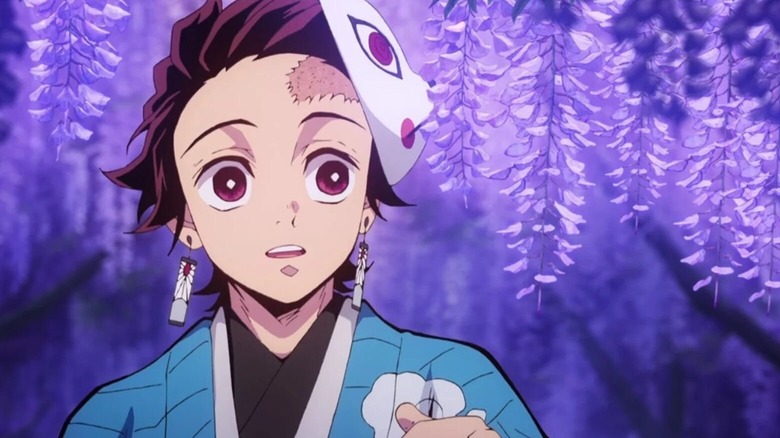
"Demon Slayer: Kimetsu no Yaiba" is a remarkably popular series. The manga of the same name currently has over 150 million copies in circulation, and the television anime adaptation, created by anime juggernauts Ufotable, is listed among IGN's best anime series of all time despite only having premiered in 2019. The show resonates profoundly on multiple levels as it tracks hero Tanjiro Kamado and his quest to vanquish Kibutsuji, the demon responsible for turning his sister, Nezuko, into one of the same.
The conventional shōnen elements are all there. Tanjiro, for his part, is unequivocally good. Yet, the way the show merges familiar elements into something wholly unique and resonant is unmatched. Its most recent season, the "Entertainment District" arc, ended wonderfully, and with a forthcoming third season on the way, fans are likely as eager as ever to find something to mind the gap. Like the best of them, "Demon Slayer: Kimetsu no Yaiba" is gateway anime, an entry point for those unfamiliar with the genre. Here, we're looking at 12 shows that satisfy that same bloody, sweet shōnen itch.
Hunter X Hunter
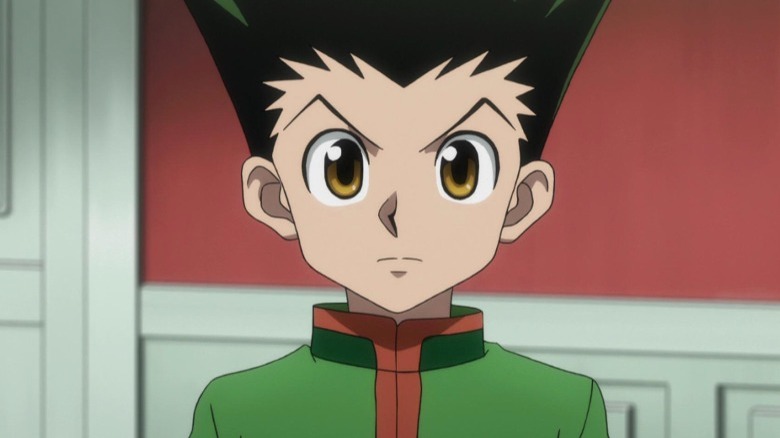
"Hunter x Hunter" might arguably be the best shōnen anime ever produced. While it's a contentious claim, and there's reasonable arguments to the contrary, there's no denying it's an enduring slice of anime history, a show (much like "Demon Slayer") that has transcended niche circles to become a full-throttle pop culture phenomenon (just go to any BoxLunch or Hot Topic for proof). Ostensibly the story of young hunter Gon and his quest to find his father, the series unspools into something considerably more profound, with arcs such as the Chimera ant beats that are all but unrivaled in the anime sphere.
While its cheerful protagonist and resistance toward strong violence might seem at odds with the work being done on "Demon Slayer," the two share more connective tissue than might be first apparent. The "Chimera Ant" arc, in particular, is almost a spiritual precursor to "Demon Slayer's" lofty, moralistic inquires. The nature of good and evil, fate and circumstance, and sundry other heady topics come into play. "Hunter x Hunter" plays with genre, and most importantly, shōnen expectations. There are twinkles of "Hunter x Hunter's" best in "Demon Slayer," likely accounting, in part, for its skyrocketing success.
Fire Force
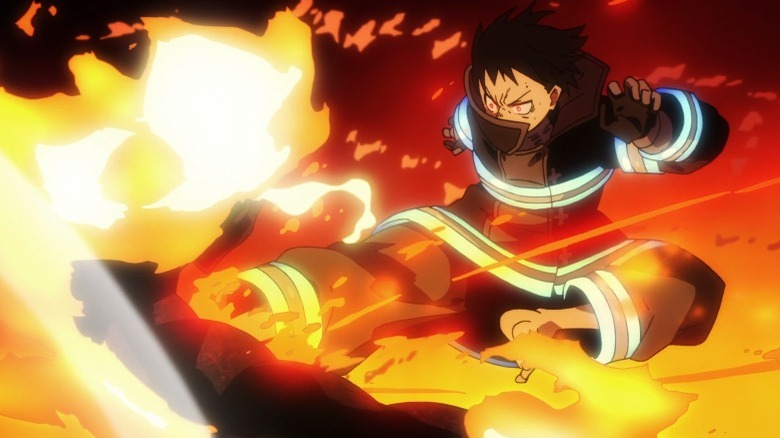
In "Demon Slayer," Tanjiro is committed to tracking down the demon responsible for turning his sister in hopes of saving her from a fate alleged to be worse than death. In "Fire Force" by David Production follows fire soldier Shinra Kusakabe and his quest to save his brother and, ultimately, find out the truth about his mother's death. If it sounds familiar, it's because it is, but "Fire Force," like Atsushi Ohkubo's other series, "Soul Eater," consistently transcends expectations. With its bass-heavy action sequences, a smattering of heart, and fatalistic interrogations, it's no less a visual or thematic treat than "Demon Slayer."
The core connective tissue might seem small, but both series deserve credit for their treatment of their antagonists. Both the demons in "Demon Slayer" and the Infernals (humans who have spontaneously combusted) in "Fire Force" are treated as human beings led astray. The protagonists of both series see them as more than monsters. Instead, they're perceived as damned souls, and both Tanjiro and Shinra make it their mission to not just slaughter them but save them, absolving their souls of sin in the process. It's weighty stuff, par for the course with shōnen series, but remarkably thrilling all the same.
Soul Eater
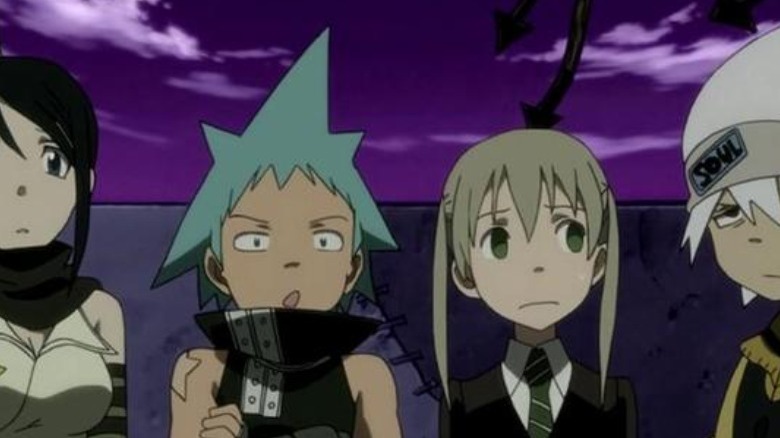
Where "Demon Slayer" has its demons and "Fire Force" has its combustion, writer Atsushi Ohkubo's "Soul Eater," confirmed by the creator himself to be a sequel to "Fire Force," has its Kishin. While they're still demons, they're miraculously powerful beings conceived when pure human souls are harvested and merged. Like "Fire Force" (though how they connect remains unseen), it parallels incredibly well with the thematic underpinnings of "Demon Slayer." Better still, its protagonist, Maka, is a girl, a welcome change of pace within the larger canon of accessible action anime.
Pursuant to some key metrics, "Demon Slayer" is "Soul Eater's" more adult successor. In terms of action and conflict, the two follow the same thrilling beats, pitting its characters against a revolving door of monstrous beings while honing their combat prowess for bigger, more terrifying threats. "Demon Slayer" spills more blood, at times relishing the sheer horror and gruesome savagery on display, but for newer fans or those a bit too young for "Demon Slayer's" mature framework, "Soul Eater" is as perfect an entry point as any.
Assassination Classroom
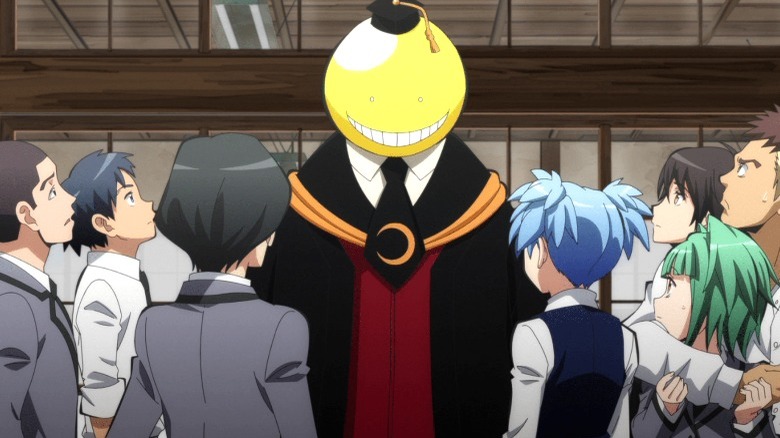
On the surface, Yusei Matsui's "Assassination Classroom" is about as diametrically different from "Demon Slayer" as an anime can get. While "Demon Slayer" adheres to the well-trod path of the shōnen that came before, "Assassination Classroom" is a truncated morality play and a pretty effective one at that. Koro-sensei, an alien being, has promised to destroy the world in a year, assuming no one is capable of assassinating him in the interim. While government efforts have failed, Koro-sensei suggests Class 3-E, a group of delinquent middle schoolers at Kunugigaoka Junior High School, be trained to take him out. Better still, he requests that he be the one to train them. In other words, they're an assassination classroom. Alongside math and science, they're being trained to kill.
Yet, for as different as their subgenres are, the underlying ethos is remarkably similar, especially matters of fate, the futility of vengeance, and the enduring nature of one's most precious memories. Both strike the heart as often as they dazzle with their action sequences (and despite the slice-of-life framework, "Assassination Classroom" has plenty of action), and both are as liable to elicit applause as they are tears. Not that it needs to be said, but in terms of anime as a bona fide art form that can meet or exceed the conventions of live action, it rarely gets more affecting than "Assassination Classroom."
My Hero Academia

The first four seasons of "My Hero Academia" don't have a great deal in common with "Demon Slayer." While both are shōnen series, and "My Hero" protagonist Izuku Midoriya and Tanjiro Kamado are likely the nicest guys ever, almost innately beyond reproach, "My Hero Academia" is considerably more accessible, playing with Western superhero tropes for its story of a young boy going from, well, zero to hero in no time flat. Yet, with the show's fifth season foray into much darker material ("Tenko Shimura: Origin" still haunts me), the once commercial anime is veering much closer to "Demon Slayer" than its early episodes would suggest.
Season 5 sees villain Tomura Shigaraki's plan to turn the world against heroes and destroy the symbol of peace have more success than ever, resulting in plenty of bloodshed and tragedy along the way. With the stark departure, "My Hero Academia" no longer feels as safe as its cartoonish, happy-go-lucky origins led audiences to believe. The aforementioned "Tenko Shimura: Origin" is as tragic and bloody as anything anime has offered before, and with the more violent material, protagonist Midoriya is thematically linked to the likes of Tanjiro. Being a hero isn't so easy after all. There are real consequences. Real bloodshed. Real pain.
Akame Ga Kill!
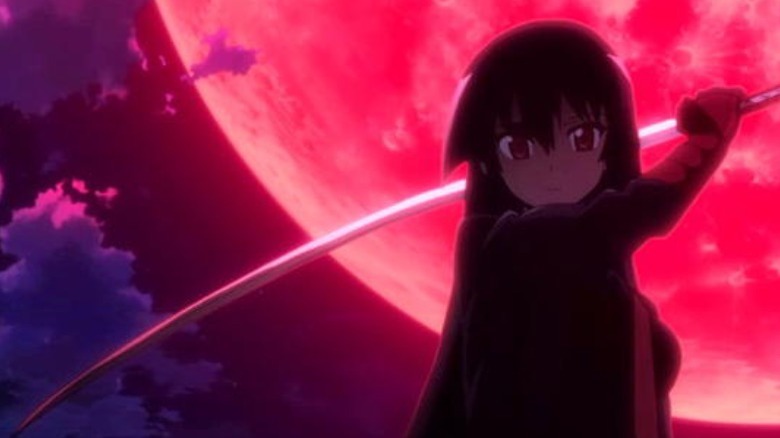
The title of "Akame ga Kill!" doesn't lie. This series abounds with deaths, some at the hands of protagonist Akame, the sword-carrying member of Night Raid, and plenty of others at the hands of all manner of baddies. Night Raid is introduced through the eyes of fresh recruit Tatsumi. The members all wield Imperial Arms, unique weaponry created millennia ago, the power of which is strong enough to defeat most enemies, with the chief caveat that if two wielders face off, one is bound to die.
Tasked with assassinating political enemies and tyrants, the short series is a masterstroke of brutal violence and political resiliency, even if it's more likely than most to devastate its audience along the way. No one here is safe, and like "Attack on Titan," it's not worth getting too attached to any particular character because odds are they won't make it to the finale. The violence parallels "Demon Slayer's," as does its preeminent interest in the innate humanity of all persons, good, bad, and everything in between. Stylistically compelling, it's a grim yet noteworthy addendum to the work "Demon Slayer" carries on.
Bleach

"Bleach" fans are living in anime nirvana right now. Recently, "Bleach: Thousand-Year Blood War" premiered on Hulu and Disney+ in select territories. A sequel series that covers the manga's final arc, fans are thrilled to see the long-running franchise get the proper ending it deserves. It's been remarkably well received, a fitting end to one of anime's greatest. At the start, "Bleach" follows Ichigo Kurosaki, a young man who gains the powers of a Soul Reaper. With his newfound abilities, he must simultaneously defend humans from the evil spirits of the dead while guiding them toward the afterlife.
Like "Demon Slayer" (and most anime, truthfully), "Bleach" is a swirling vortex of religious iconography, themes, and spiritual undercurrents. Similarly, it rejects notions of pure good or evil and instead explores the nuance therein. While it's not quite as violent or hard-hitting as "Demon Slayer," "Blood War" notwithstanding, it's an accessible (and classic) example of shōnen anime at its best.
Chainsaw Man
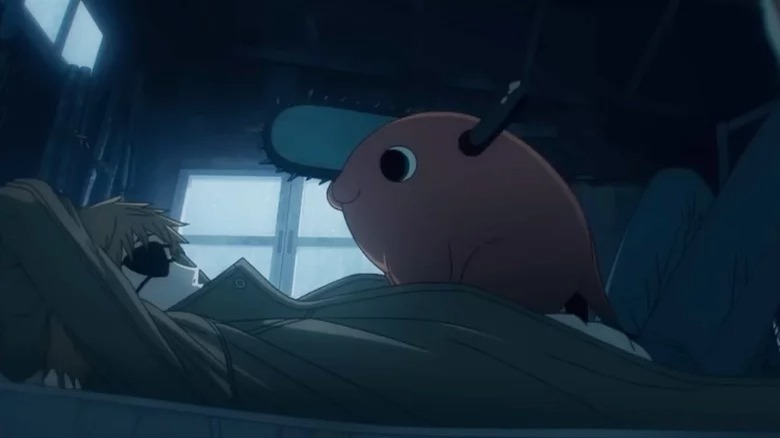
"Chainsaw Man" is the newest entry on this list. Widely anticipated and critically praised, the series may have just premiered, though it's poised to be the next anime must-watch. The anime follows the titular "Chainsaw Man" who is first introduced as Denji, a poor teenager bearing an enormous debt. It's a heartrending introduction that immediately distinguishes him from the likes of Deku or Gon. His upbringing is grim, much like "Demon Slayer's" Tanjiro, and consequently, he has little choice but to become a demon fighter.
And a demon fighter he becomes. Denji joins the Public Safety Devil Hunters, a government agency that focuses on combatting a burgeoning devil (demon) threat. If it sounds familiar, it's because it is. Yet, like "Demon Slayer," it's not the conceit that matters most, but the execution. "Chainsaw Man" is hyper-stylized and violent, and the requisite carnage the title suggests is there in all its gory glory. It started as strong as "Demon Slayer," and while time will tell, it's looking likely to be just as consistently thrilling.
Fate/Zero
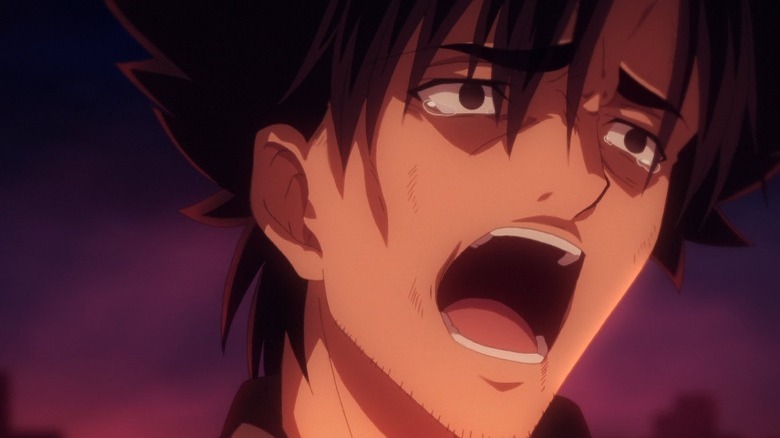
"Fate/Zero" is considerably slower than most other anime. It's not until the second season that the full scope of Gen Urobuchi's story comes to light. A prequel series to "Fate/Stay Night," the series follows the overarching Holy Grail War, a magical tournament in which participants seek the assistance of deceased heroes to win the titular Grail, which is capable of granting any wish the participants can envision. The heroes run the gamut from Gilgamesh to King Arthur, all beautifully rendered in ways that both honor and diverge wonderfully from their source material.
While it's considerably less action-focused than "Demon Slayer," the heart and profundity of its merging of magic and classic swordsmanship remain enduring high points. It's dour stuff, and its mythology and lore are denser than "Demon Slayer's," but as a brief foray into headier material in anticipation of "Demon Slayer's" forthcoming third arc, it's remarkably thrilling.
Parasyte -The Maxim-
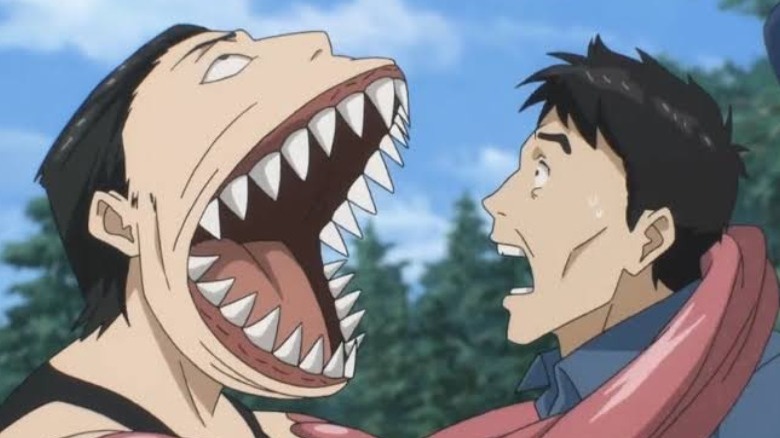
While "Demon Slayer" is very much a shōnen anime, it additionally works well as a horror-adjacent property. While never especially scary, it's hard to not be horrified as the "Entertainment District Arc" collapses into flames, echoing real tragedy with a scale and attention to detail not often seen. Hitoshi Iwaaki's "Parasyte" veers considerably closer to horror, but its thematic structure is much like "Demon Slayer's," making it the perfect companion for fans of the former who wish Tanjiro's quest was just a little bit scarier.
Shinichi Izumi is a high school senior whose body is taken over by a parasitic alien organism. Izumi miraculously survives, preventing the parasite from completely taking over his body. Instead, like "Chainsaw Man," he gets a wickedly cool alien arm that allows him to effectively combat other parasitic organisms strewn about town. Pondering deep philosophical questions about the nature of humanity, the environment, and the roots of good and evil, it's no less heavy than "Demon Slayer" and no less compelling.
Blue Exorcist
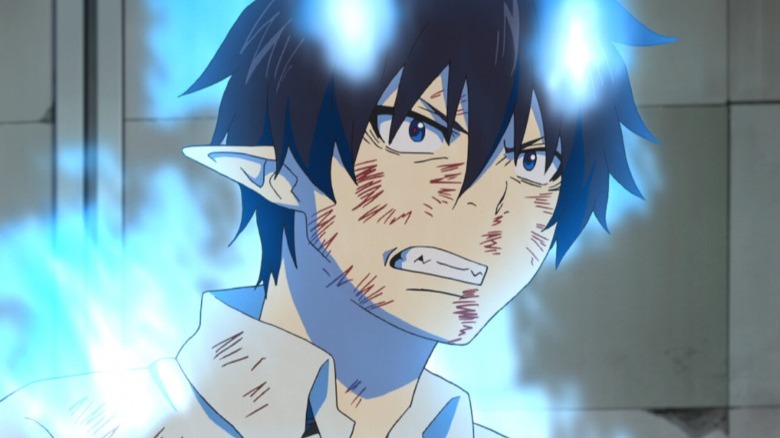
"Blue Exorcist" has it all. Protagonist Rin Okumura is as cool (and capable) as any shōnen hero. He's hard-headed, extraordinarily capable, and motivated to fight the forces of evil because of a personal tragedy. The action is gorgeously animated, there are heaps of friendship overcoming all odds, and there are even plenty of darker, grimmer undercurrents for the fans who think they've seen it all before.
Additionally, "Blue Exorcist" doubles down on the sibling angle, allowing Okumura and his twin brother, Yukio, to take down Satan together. A lot like "Demon Slayer," it's thrilling to see two siblings tackle the greatest forces of evil together, doing so with plenty of grit, humor, and violence along the way. Like "Demon Slayer," there's a pretty sensational feature-length movie to bridge a season's gap. Both "Blue Exorcist" and "Blue Exorcist: The Movie" are worth checking out for more demon-slaying family action.
Sword Art Online
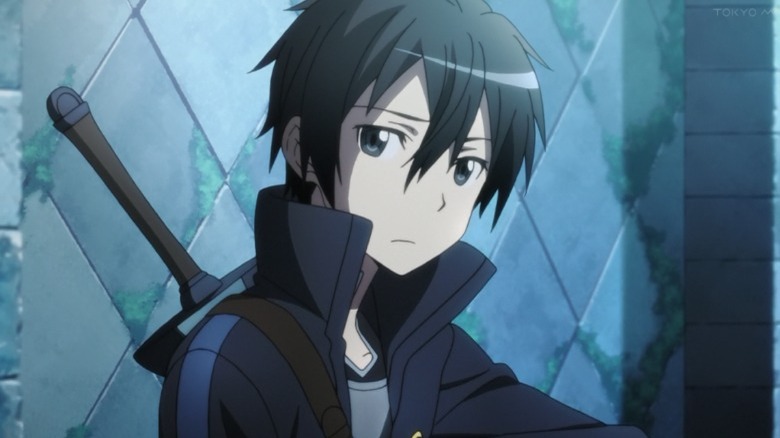
"Sword Art Online" is considerably more "anime" than "Demon Slayer." With a movie, various series, and dovetailing franchise entries, it's not necessarily the most accessible entry point for the burgeoning anime fan, especially those bewitched by "Demon Slayer" and eager to find anime that is much the same. While "Sword Art Online" won't work for every "Demon Slayer" fan with its more mainstream, commercial Western feel, it's worth checking out. The more time fans spend in its digital world, the clearer the links to "Demon Slayer" become.
Taking place in the near future, "Sword Art Online" follows its protagonists as they play through MMORPG worlds. It's a conventional, childhood fantasy, fictionalizing the early aughts' wish to live in the worlds of "World of Warcraft" or "Everquest" — a kind of fantastical "Ready Player One." Kirito and "Demon Slayer's" Tanjiro have a lot in common, and truth be told, the heart is as strong in both. Stylistically, they might not seem that much alike, but dig beneath the surface, and you will find the action-packed beating heart that binds them together.
Read this next: 14 Anime Shows To Watch If You Love My Hero Academia
The post 12 Anime Shows Like Demon Slayer That You Can Binge Today appeared first on /Film.
Intel Releases November 2022 CPU Microcode For Various Functional Issues
The Addams Family Tree Explained
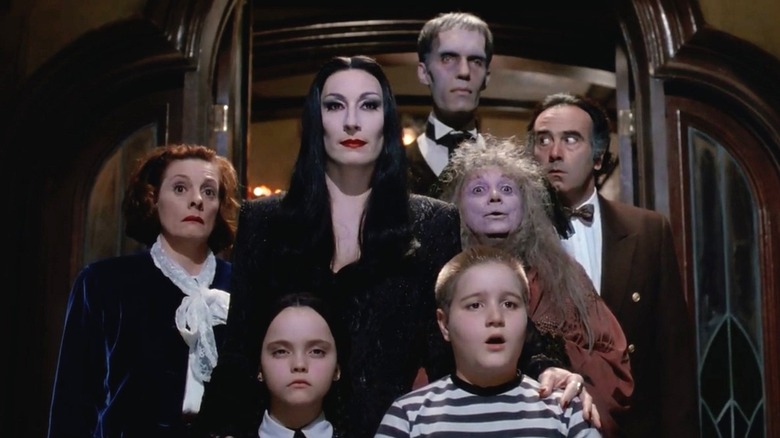
The Addams Family has been a part of American culture for 84 years, starting with cartoons in The New Yorker and branching out into sitcoms, live-action features, and animated films. Their morbidly hilarious shenanigans and fierce loyalty to each other go hand in hand, and they continue to speak to freaks, outcasts, and fans of the macabre today. Though you probably have a good idea who the major players in the Addams Family are, some of the cobweb-covered branches of their family tree may surprise you.
For a fictional family that has been around since 1938, the Addams Family has a surprisingly straightforward canonical genealogy. Though there are countless aunts, uncles, and cousins that have accumulated over the years — most mentioned only in passing — the core group remains largely the same. Still, with a new series featuring the spooky family destined for Netflix, a refresher can't hurt. Here's a complete rundown of America's royal goth family.
Gomez Addams
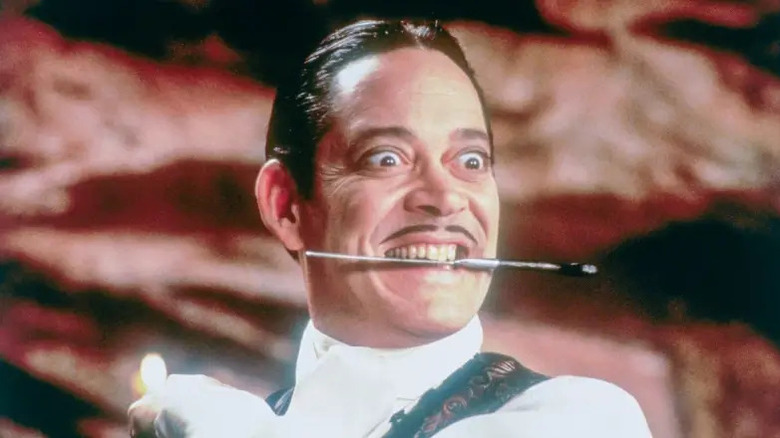
The patriarch of the Addams family, Gomez is a devoted husband to Morticia and a doting father to Wednesday and Pugsley. He dresses like an undertaker for the mob, but he does it with such suave confidence that he makes it work. He has a fondness for toy trains (especially when they crash), swordplay, and hearing his wife speak French. Gomez is independently wealthy, keeping a keen eye on the stock market, but he is always generous with his money. He donates treasures to charity and then buys them back again at auction — not to boast, but because he enjoys both philanthropy and the lost art of dramatic living.
According to 1991's "The Addams Family," Gomez met Morticia at his Cousin Balthazar's funeral while he was still a suspect in his cousin's death. Though he and his brother Fester frequently tried to kill each other as children, cementing the Addams' fondness for murder, they are incredibly close.
Morticia Addams
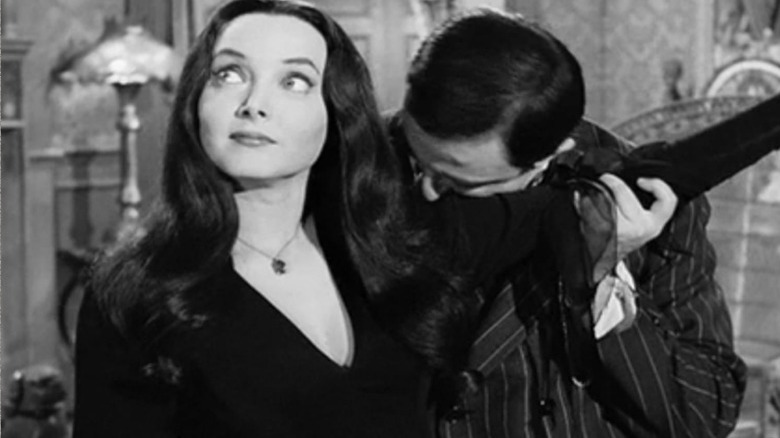
Née Morticia Frump, Mrs. Addams is a loving wife to Gomez and caring mother to Wednesday and Pugsley. Known for both her killer style and her killer plants, Morticia comes from a long line of witches. Her trademark dress is form-fitting and features tentacle-like extensions that create the impression that she's floating across the floor when she walks. She has a greenhouse full of carnivorous and poisonous plants, where her beloved African Strangler Cleopatra lives and feasts on red meat. Whether she's using plant-based potions or her otherworldly beauty, Morticia is an expert spellcaster.
Gomez is completely enraptured by Morticia, who has a history of respecting women who place men under "strange sexual spells." She reveals as much to Fester's late wife Debbie, and she delightedly tells Wednesday's teacher a story about her great-aunt Calpurnia Addams, proudly saying, "They say she danced naked in the town square and enslaved a minister."
Wednesday Addams
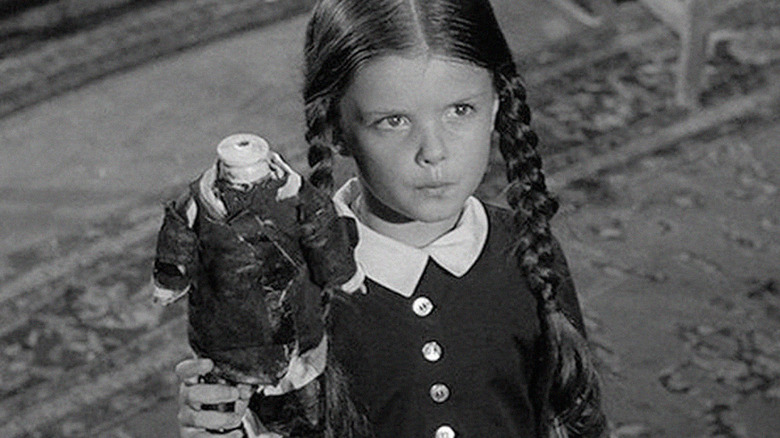
Wednesday is Gomez and Morticia's eldest child, and sister to Pugsley. With her pale skin and long black hair, she takes after her mother. Great-Aunt Calpurnia is her hero, but according to Morticia, Wednesday has to wait until after college to enslave any ministers. She frequently recruits Pugsley to play games that seem guaranteed to kill him, and she enlists his help in "Addams Family Values" to murder their youngest brother, Pubert.
The Addams men tend to be more excitable than the Addams women, and Wednesday is no exception: Her wry monotone and refusal to smile (along with her intelligence and ability to cut to the bone with words alone) make her seem much older than her years. Though the modern Wednesday isn't one to dance (not until after college, anyway), the '60s sitcom version of the character is famous for the dance she tries to teach Lurch.
Pugsley Addams
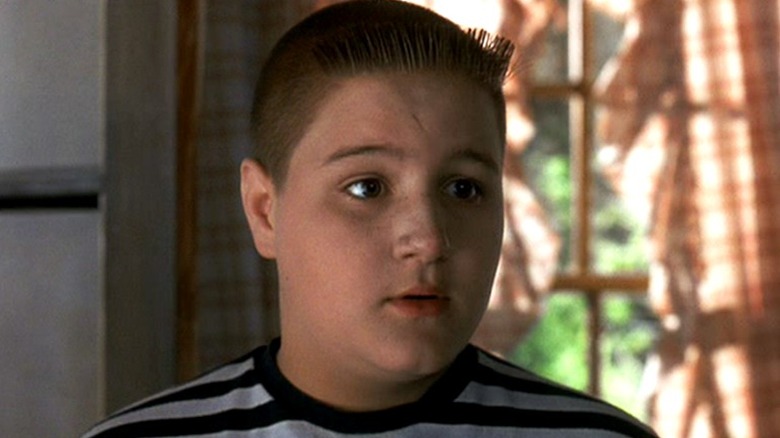
Pugsley is the youngest child of Gomez and Morticia ... usually. The number of Addams children varies across the family's various incarnations, but most of the time, Pugsley and Wednesday are the only two young members of the family.
Pugsley can be just as gruesome and morbid as the rest of his clan, but he's also a bit of an outlier. He's usually blonder than his black-haired parents and sister, and he sometimes engages in "normal" activities, like playing with puppies and trying to join the Boy Scouts.
However, Pugsley may be responsible for resetting the canonical number of Addams siblings. In "The New Addams Family," the sitcom that followed the introduction of Pugsley's younger brother Pubert in 1993's "Addams Family Values," Wednesday tells a visitor to the Addams home, "Yes, there were three of us, but Pugsley ate the little one." While Pugsley might not always be as homicidally inclined as Wednesday, he's an Addams when it counts.
Fester Addams
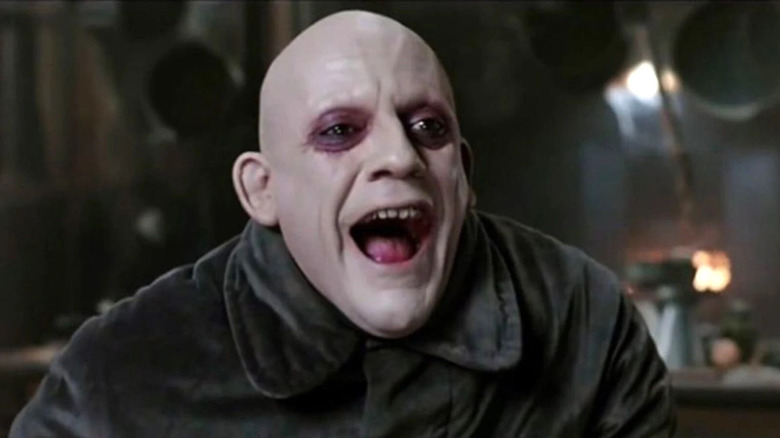
In the original sitcom, Fester is Morticia's uncle. However, in all subsequent iterations, he is Gomez's brother. Fester is one of the most mysterious members of the Addams Family, and not just because of his shifting place in the family tree. He can conduct electricity, frequently popping a light bulb in his mouth to turn it on, though his power is never explained. Also, he once visited the Bermuda Triangle (the most mysterious place on Earth) only to emerge with amnesia.
Fester has a high, goofy voice, but he looks like a deranged monk, with his dark robe and sunken eyes. He is a study in contradictions — he is fun-loving but murderous, childlike but terrifying — which likely explains his enduring popularity among audiences. Regardless of his place on the family tree, Fester is a supportive and loyal uncle who knows a lot about different weapons and types of fungus, which only makes him an even more beloved member of the Addams Family.
Ophelia Frump
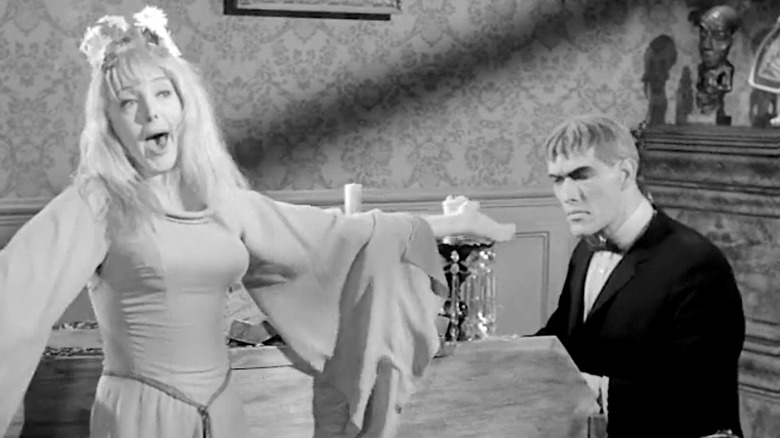
Ophelia is Morticia's lovesick sister. Constantly searching for a man (including Cousin Itt, who quickly rejects the idea), Ophelia is another outlier in the family. With blonde hair, a fondness for flowers and light colors, and a "moldy ballerina chic" approach to fashion, Ophelia stands out amongst her black-clad family. Though one of the lessons of "The Addams Family" is that you should never judge a book by its cover, the fact that Ophelia is a black sheep amongst both the Addamses and "normal" society does make it hard not to see her as an odd duck.
Shakespeare jokes abound with Ophelia — in "Ophelia Finds Romance," an episode of the original sitcom, she talks about "slings and arrows" and falls in love with a man named Horatio. Knowing what happened to Shakespeare's Ophelia only makes Ophelia Frump that much more of a wild card, which ensures that, despite her differences, she still fits in with the rest of the family.
Debbie Jellinsky
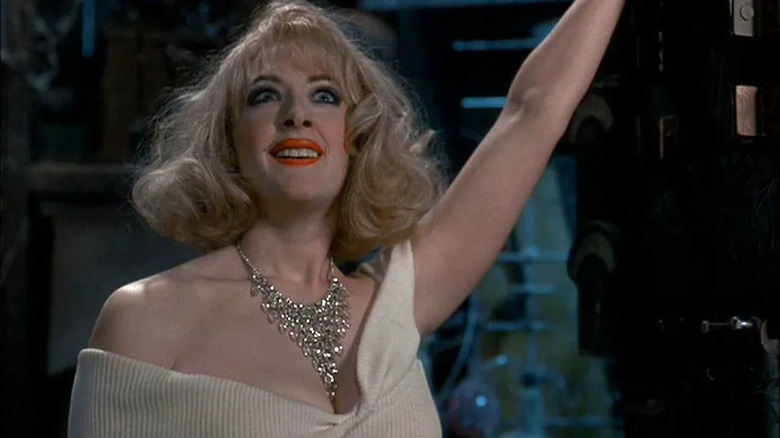
Debbie — or "Debbie," since she uses many aliases — is Fester's murderous late wife. A famous black widow who goes through rich husbands as quickly as she goes through costumes, Debbie poses as Pubert's nanny to get close to Fester, who, as Gomez's older brother, is heir to the Addams fortune.
Debbie got her start in murder when her parents gave her the wrong Barbie doll, and her bloody pursuit of riches snowballed from there. An expert in manipulation, Debbie earns this rebuke from Morticia: "You have gone too far. You have married Fester, you have destroyed his spirit, you have taken him from us. All that I could forgive. But, Debbie ... pastels?"
Though Morticia herself is a style icon and her criticism of Debbie's taste in home decor is valid, it's hard not to root for the greedy murderess. Debbie meets her demise thanks to a timely intervention by baby Pubert and appears only in "Addams Family Values," but her legacy lives on in Addams Family lore.
Grandmama Addams
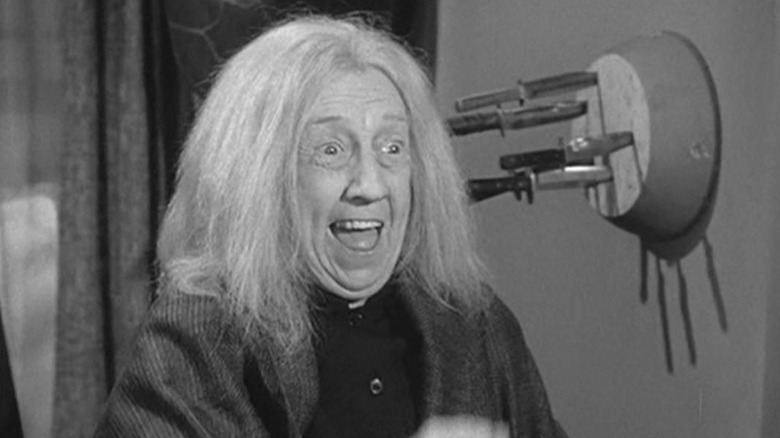
Interestingly, the Addams children always have one or two living grandmothers, but their grandfathers are always out of the picture. Grandmama is Gomez's (and sometimes Fester's) mother. She is present and living in the '60s sitcom, "The New Addams Family," and the 2019 animated film. However, in the '90s live-action films, she resides in the Addams' family graveyard, having been murdered along with her husband by an angry mob, who presumably killed them for being too different.
Grandmama is a witch just like those on Morticia's side of the family, which sometimes causes friction between her and Morticia's mother, particularly when they attempt to share the kitchen for potion-making purposes. Whether living or dead, Grandmama is an important presence in the lives of the Addamses, who have a touching reverence for their ancestors that underscores their loyalty and commitment to their altogether ooky family.
Granny Frump
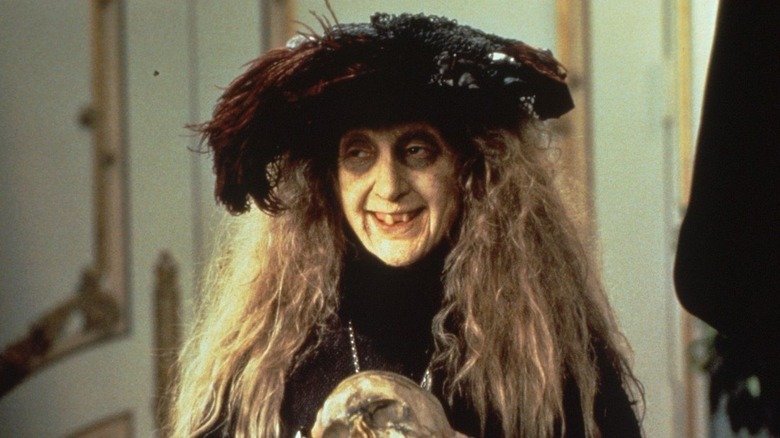
Granny Frump is Morticia and Ophelia's mother. Similar to Grandmama, she often switches between the worlds of the living and the dead. She is alive and present in each 20th-century iteration of the franchise, but she is deceased in the 21st-century animated films. But death can't stop an Addams or a Frump, and she communicates with Morticia via crystal ball in 2019's "The Addams Family."
Just like Grandmama, Granny Frump is a witch; however, her appearance is more frightening and more stereotypically "witchy" than Grandmama's. Granny Frump is also quite the questionable cook, serving gloopy, sentient meals to the family in 1991's "The Addams Family." She keeps the family together, though, helping Morticia and Gomez figure out why Pubert is sick in "Addams Family Values." Grandmama and Granny Frump have distinct personalities, showing that no two witches are the same, while their frequent resurrections also prove that you can't keep a good witch down.
Lurch And Thing
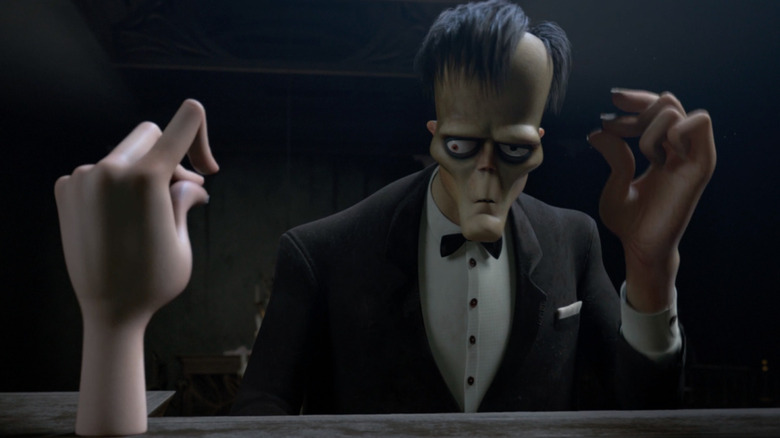
Lurch is a tall, mostly silent, Frankenstein-esque figure. His deep voice and "You rang?" catchphrase quickly made him a pop culture icon. Thing, meanwhile, is a disembodied hand. In the '60s sitcom, it usually emerges from behind boxes, but — thanks to CGI — it became a free-roaming spider-like hand starting with 1991's "The Addams Family."
Lurch is the Addams' butler and Thing acts as a servant, but they are both cherished members of the group. The Addams are very egalitarian people, and they treat the people who work for them with kindness and respect. The 2019 animated film suggests that Lurch is a "criminally insane" escapee, while the '60s sitcom shows family photos of Thing that prove that it descended from other hands. Though neither Lurch nor Thing actually have a place on the Addams' biological family tree, they are still very much members of the family.
Cousin Itt And Margaret Alford Addams
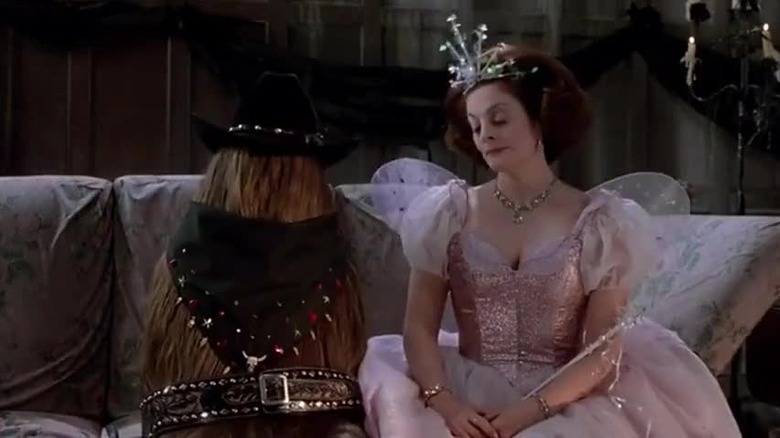
Itt is Gomez's cousin. A short man with floor-length hair that obscures his entire body, Itt speaks in high-pitched gibberish that the other characters can, somehow, understand. Though he usually only makes brief appearances, Itt has become a pop culture fixture for his cheery obliviousness to his own strangeness. Itt is very friendly and rumored to be quite the ladies' man, as seen during Ophelia's attempt to marry him and his seduction of Margaret, the former wife of Gomez's lawyer in 1991's "The Addams Family."
Itt is a frequent visitor to the Addams' home, even living in their chimney at times, but in "Addams Family Values," he lives elsewhere with his wife, Margaret, and their baby, What. Margaret and What are not present in the later animated films, suggesting that — along with Pubert — they may have been excised from the canonical family tree. Fan favorite Itt always remains, though.
Pubert Addams
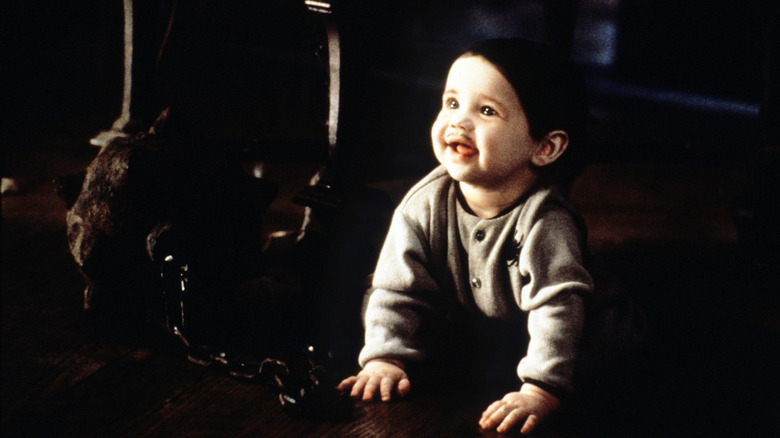
Pubert is Gomez and Morticia's second son and youngest child, appearing only in "Addams Family Values." He is the spitting image of his father, with slicked-back black hair and a pencil-thin black mustache, even as an infant. Though he turns "normal" when he becomes sick over the stress of Debbie's "enslavement" of Fester — that means sprouting curly blonde hair, having a cherubic, mustache-free smile, and favoring "The Cat in the Hat" over grimmer storybooks — Pubert is usually just as macabre as the rest of his family. He has an eerie knack for escaping certain death, foiling all of Wednesday's plans to murder him, and has the ability to produce flaming arrows out of thin air.
As mentioned above, Pubert may have been eaten by Pugsley, according to "The New Addams Family," which is a highly appropriate way for the mysterious and spooky Addams clan to dispose of family members who are inconvenient to continuity.
Wednesday Jr., Pugsley Jr., And Pancho Addams
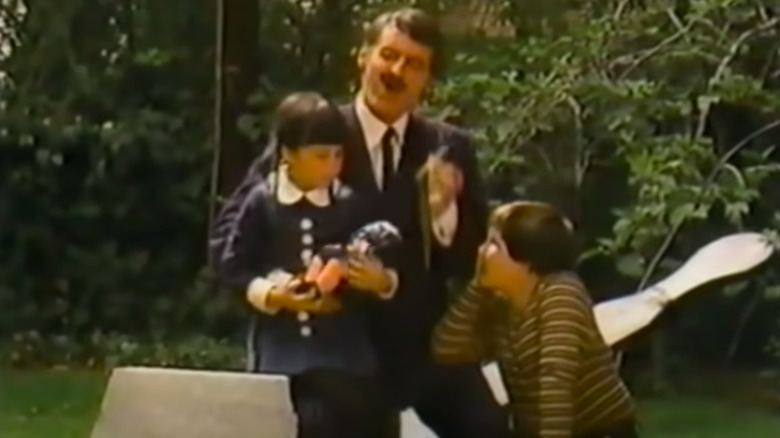
The 1977 TV movie "Halloween with the New Addams Family" saw three additions to the Addams clan, all of whom were forgotten as quickly as they arrived. In the film, Pugsley and Wednesday are grown and out of the house, and Gomez and Morticia have two more children: Pugsley Jr. and Wednesday Jr., who appear to be clones of their namesakes. In this version of the family, Fester is still Morticia's uncle, and new arrival Pancho is Gomez's brother.
Just like Pugsley Jr. and Wednesday Jr., Pancho is a mirror image of his sibling. He looks, dresses, and sounds like Gomez, and he delights in Morticia speaking French, just like Gomez does. In fact, he even attempts to woo Morticia away from his brother. Though Henry Darrow does his best as Pancho, he's no John Astin, and the real Gomez emerges victorious as Pancho fades away into obscurity.
The Extended Family
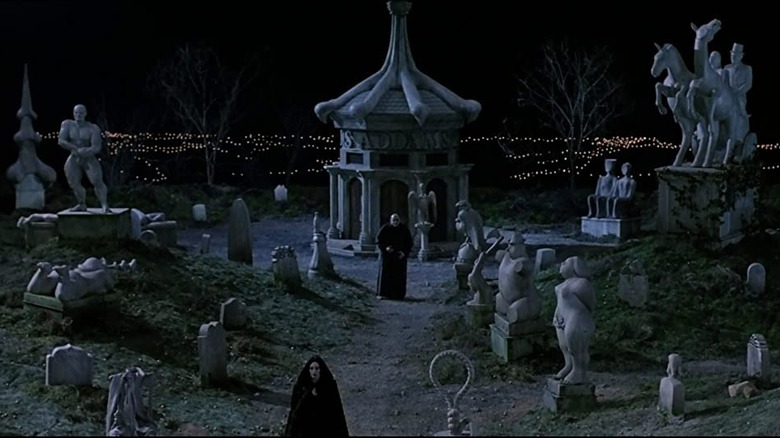
One of the most delightful things about the Addams Family is their hilariously morbid collection of extended family members. An exhaustive rundown of everyone hiding in the Addams and Frump family trees is impossible, but here are a few standouts.
In one of the best gags from 1991's "The Addams Family," Morticia pulls three garment bags out of an armoire, which contain Uncle Niknak's winter wardrobe, Uncle Niknak's summer wardrobe, and Uncle Niknak himself. Cousin Balthazar and Great-Aunt Calpurnia have already popped up on this list; the former was murdered, possibly by Gomez, and the latter was burned as a witch in 1706. Continuing the tradition of Addamses and Frumps meeting grisly ends, Morticia tells us that Great-Aunt Lavinia was beheaded by her own children. The '60s sitcom didn't shy away from such macabre fates for the family members, either. There's a picture in the hallway of Cousin Grisly facing a firing squad, and viewers learn that Cousin Clot was electrocuted.
There are so many more creepy and kooky members of the Addams Family — including Gomez's ancestor, who burned down the Library of Alexandria — that it would be impossible to list them all. As seen in the séances and games of Wake the Dead, there is little difference between living and dead for an Addams. America's creepiest family is a role model for us all, because death is no match for the strong bonds between its members. They may be altogether ooky, but they revere their ancestors for being true to their wildly macabre selves, and they try to emulate their combination of individuality and family loyalty. Perhaps that loyalty is why the Addams Family tree has remained relatively unchanged throughout the decades.
Read this next: The 15 Best Horror TV Shows Of All Time
The post The Addams Family Tree Explained appeared first on /Film.
Warzone 2100 version 4.3 is out now with a new 'Super Easy' mode
Surprising probably no one, most people use the Steam Deck as a handheld
Dota 2 set to remove OpenGL support, new hero announced and more
NVIDIA PhysX 5.1 SDK goes open source
Quentin Tarantino Had A Pretty Good Reason For Not Casting Michelle Yeoh In Kill Bill
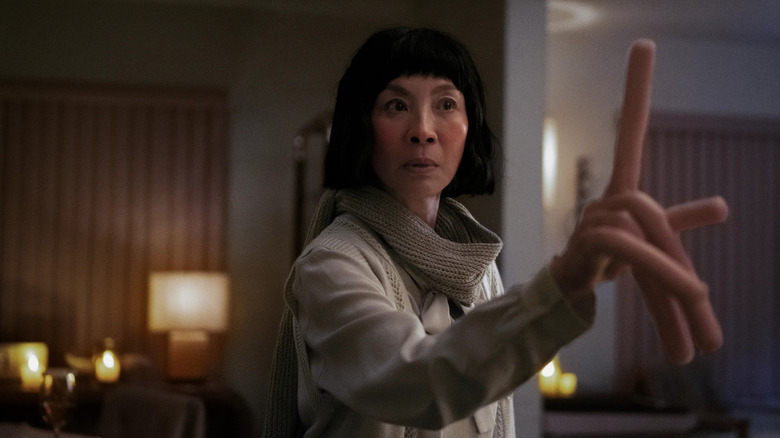
Did Michelle Yeoh ever tell you about the time she broke her back and some upstart director gave her encouragement to get back on the cinematic saddle?
If you know martial arts action movies, you know Yeoh. In her earliest works, she went as Michelle Khan, but as she racked up credits in Hong Kong action movies during the '90s and starred as James Bond ally Wai Lin in the '97 spy flick "Tomorrow Never Dies" she would be credited with her proper surname. From 1984 onward, including notable works like Ang Lee's "Crouching Tiger, Hidden Dragon" and "Supercop" (a.k.a. "Police Story 3"), Yeoh continued to play characters with a staunch spirit and meticulous discipline, whether the role was that of a geisha or a crazy-rich Asian.
It was during the filming of Ann Hui's 1996 action picture "The Stunt Woman" that Yeoh, understandably doing her own stunts, suffered fractured vertebrae whilst jumping from a bridge onto a car driven by co-star Jackie Chan. The injury sent Yeoh into retirement – "I thought I broke my back," she tells Amy Nicholson. Nicholson's profile of the Malaysia-born actor for Town & Country chronicles Yeoh's recovery, which necessitated a leave from acting (for the second time -- "Supercop" was a return of sorts in 1992), the use of a back brace, and few visitors.
Quentin Tarantino, meanwhile, was enjoying success as a filmmaker. The "Reservoir Dogs" writer-director had traveled to Hong Kong to screen his latest, some little thing called "Pulp Fiction," and requested an audience with Michelle Khan. In pain every time she drew breath, the former ballet dancer gave him five minutes.
He's Got A Point
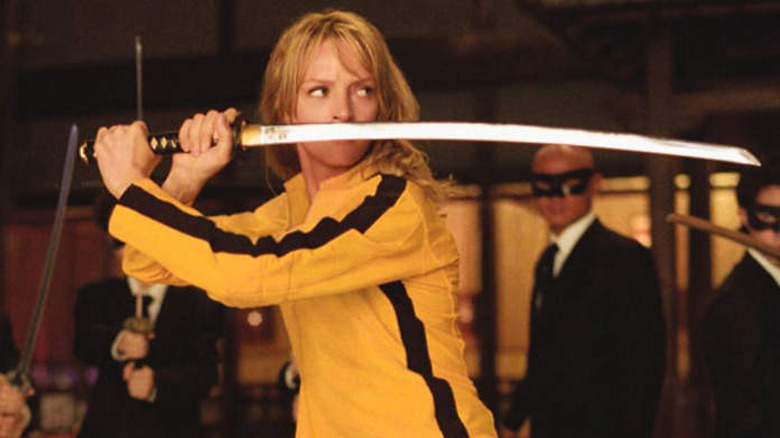
"I must say, Quentin, he's persistent," Yeoh added, "He is who he is today because he's full of passion and love, so he wore me down." In his allotted time, Tarantino sat on a pillow before Yeoh and recounted her stunts, second by second. His animated passion and genuine admiration stirred the "Everything Everywhere All At Once" star, and provided some inspiration for Yeoh to return to work. The following year, she signed on as the first ethnic Chinese Bond girl Wai Lin in "Tomorrow Never Dies," opposite Pierce Brosnan's 007.
As for Tarantino, a decade later he would pay homage to Hong Kong martial arts action films (and blaxploitation, and spaghetti westerns, and samurai sagas...) with "Kill Bill:Vol 1" starring Uma Thurman as a left-for-dead bride who adopts Jules Winnfield's great vengeance and furious anger against the team of assassins who tried to kill her. One of her foes, half-Chinese-Japanese American O-Ren Ishii (played by Lucy Liu) at one point could have been Yeoh; why didn't it happen? Town & Country has Yeoh's response:
"I asked Quentin the same question. He's very smart. He said, 'Who would believe that Uma Thurman could kick your ass?'"
Indeed. That said, it's hard to believe that Uma Thurman could kick Gordon Liu's ass, he of essential Hong Kong kung fu flick and Wu-Tang Clan album inspiration "The 36th Chamber of Shaolin." In "Vol.1," he played Johnny Mo, the leader of the Crazy 88 Yakuza gang, but don't let the black Kato mask fool you – Beatrix Kiddo is incredibly lucky she caught Johnny Mo without his three-section staff.
Read this next: 20 Movies About Time Travel Ranked Worst To Best
The post Quentin Tarantino Had a Pretty Good Reason For Not Casting Michelle Yeoh In Kill Bill appeared first on /Film.
Michael Madsen Joined Reservoir Dogs Just To Hang Out With Harvey Keitel
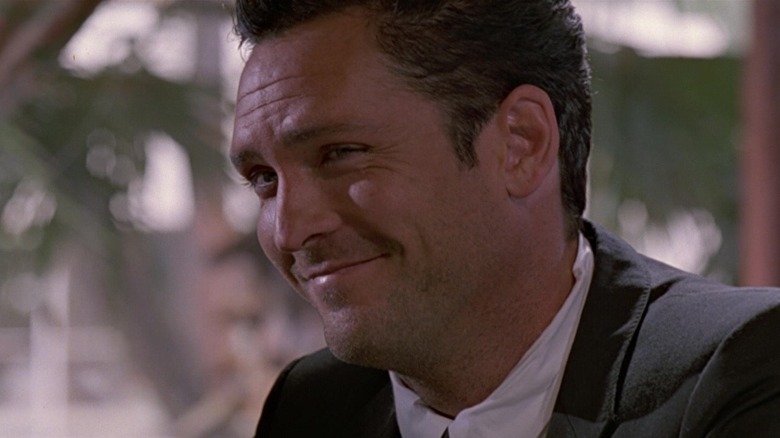
"Reservoir Dogs" was Quentin Tarantino's arrival on the scene as an independent filmmaker, and it immediately proved that he was a director to watch. A low-budget pressure cooker of a movie that centers on the crew of would-be criminals in the aftermath of a robbery gone horribly wrong, the film was the origin of some of Tarantino's filmmaking trademarks, including witty dialogue and hyper-violence. The excellent cast helped Tarantino's debut massively, which boasted a level of acting talent leagues above what most directors can obtain for their first feature film. Actors like Steve Buscemi, Michael Madsen, and the legendary Harvey Keitel anchored the picture.
Of course, securing such a stellar cast was a process of its own. Luckily for Tarantino, Keitel was on board with the movie from the moment he read the script, even volunteering to produce the movie to help it get off the ground. If an actor like Keitel signing on so quickly isn't an endorsement of your art, I don't know what is.
With Keitel on board, things became even easier for Tarantino. When such a bevy of immense talent signs on with a first-time director, the movie is sure to attract eyes from around the industry. In the case of Michael Madsen, who would go on to play the brutal Mr. Blonde, he wanted to do the film just to pal around with Keitel, according to a Screen Rant interview from 2020.
My Buddy Harvey
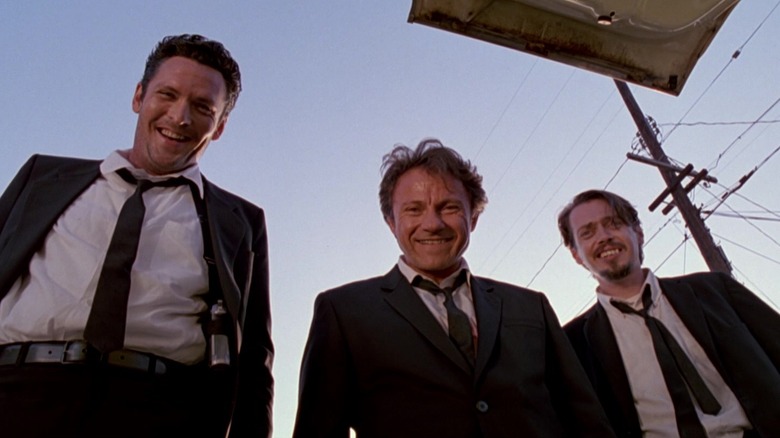
In the Screen Rant piece, Michael Madsen spoke about his motivations for signing up to perform in "Reservoir Dogs" as Mr. Blonde. "I had worked with Harvey Keitel on 'Thelma & Louise,' so me and him were already buddies," said the actor. "What I found out he was playing Mr. White, that was the attraction, besides it being one of the best scripts I had ever read in my life up to that point."
While the opportunity to bro down with Harvey Keitel was the initial thing that drew Madsen into the movie, the script also blew him away. The strength of Tarantino's story further solidified his decision to join up, even with such an unknown at the movie's helm. "I knew it was something special. I knew it was something different," said Madsen. "But nobody knew Quentin Tarantino. Nobody. I had never even met him ... to be able to be in the first movie he was given the money to make and direct, was quite the privilege."
There would be a bit of a hiccup with the casting of Madsen, as he wanted to play the role of Mr. Pink until Tarantino gave him an ultimatum of playing Mr. Blonde or no one at all. With the cast settled, "Reservoir Dogs" went on to great critical and cult success. Despite modest box office earnings, the film kicked off what would become Tarantino's storied filmography. Both Keitel and Madsen would work with Tarantino again on future projects, even if they didn't get to hang out together on set.
Read this next: The 23 Best Heist Movies Of All Time
The post Michael Madsen Joined Reservoir Dogs Just To Hang Out With Harvey Keitel appeared first on /Film.
Quentin Tarantino Almost Remade The 1970s Thriller The Outfit
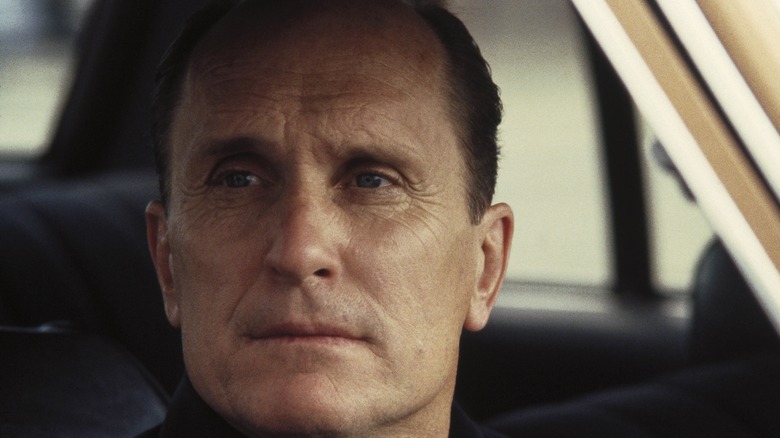
Richard Stark's Parker books are pure pulp pleasure. They're nasty, unsentimental crime novels written with a brutal economy. The prose is stiletto sharp, the stories shaved to the narrative bone. Once you read "The Hunter," which introduces us to the underworld shenanigans of a skilled robber named Parker, you have to read them all – and you can do so in a remarkably short span of time. These books are short and addictive.
Stark's work is so thrillingly vicious that you're occasionally concerned for the author's mental well-being. The author might actually be worried, too, as Stark is the pen name for legendary noir novelist Donald E. Westlake. By all accounts, Westlake, who passed away in 2008, was a lovely man, which makes Parker's adventures the most entertaining therapy sessions ever put to paper. Better to type out one's worst, repressed impulses than act on them.
Unsurprisingly, Quentin Tarantino is a massive Stark fan. Though many critics compared his early work to Elmore Leonard (an analogy Tarantino enthusiastically embraced when he turned the author's "Rum Punch" into "Jackie Brown"), "Reservoir Dogs" and "Pulp Fiction" pulsate with the meanness of Stark. So if you're wondering why Tarantino never tried his hand at a Parker movie, well, Tarantino wonders that as well.
The Crime Flick Classic We Never Got To See
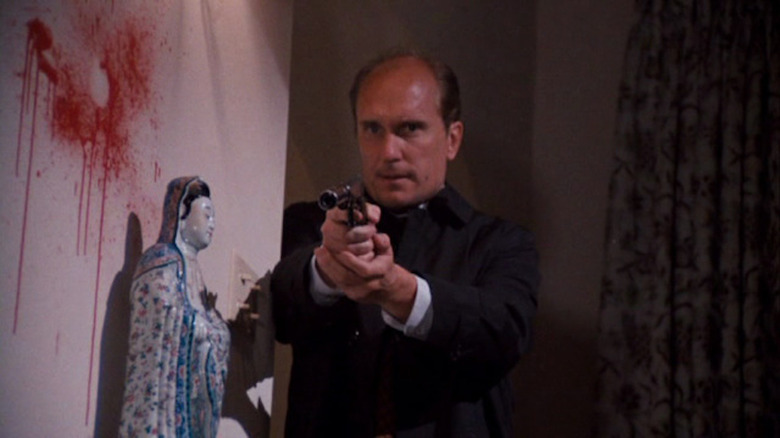
In his new book, "Cinema Speculation," Tarantino dishes randomly on his movie likes and loves and hates. At one point, he hits upon John Flynn's no-frills adaptation of Stark's "The Outfit" (the third book in the Parker series). There's nothing wrong with Flynn's film at all, but, as with "The Hunter" (which spawned John Boorman's "Point Blank," "Brian Helgeland's "Payback" and Taylor Hackford's woefully uninspired "Parker"), there's room for another interpretation. And Tarantino nearly made it happen. As he writes in his book:
"I considered doing an adaptation of the book in the late nineties, with Robert De Niro as Parker, Harvey Keitel as Cody, and Pam Grier as Bett. And just writing that now makes me wish I would have done it."
"The Outfit" is the climax of an arc that begins with "The Hunter." Parker has drawn the ire of a major crime syndicate, and, rather than skip out of town, goes to war with the entire organization. It's macabrely funny, but not the kind of story that gets better with adornment. Flynn understood this, but I'm not sure Tarantino would take the same tack. He likes to hang out with his characters. Parker doesn't hang out. Parker does his job with ruthless efficiency. I'm not sure this would've worked.
But his casting instincts are, as ever, spot on. Robert Duvall made for a terrific Parker in Flynn's film, but De Niro would nail the humorlessness of the character. So add Tarantino's "The Outfit" to the list of alternate-dimension films I'd drive through a mountain to see.
Read this next: The Horror Movies We Can't Wait To See In 2022
The post Quentin Tarantino Almost Remade the 1970s Thriller The Outfit appeared first on /Film.
















